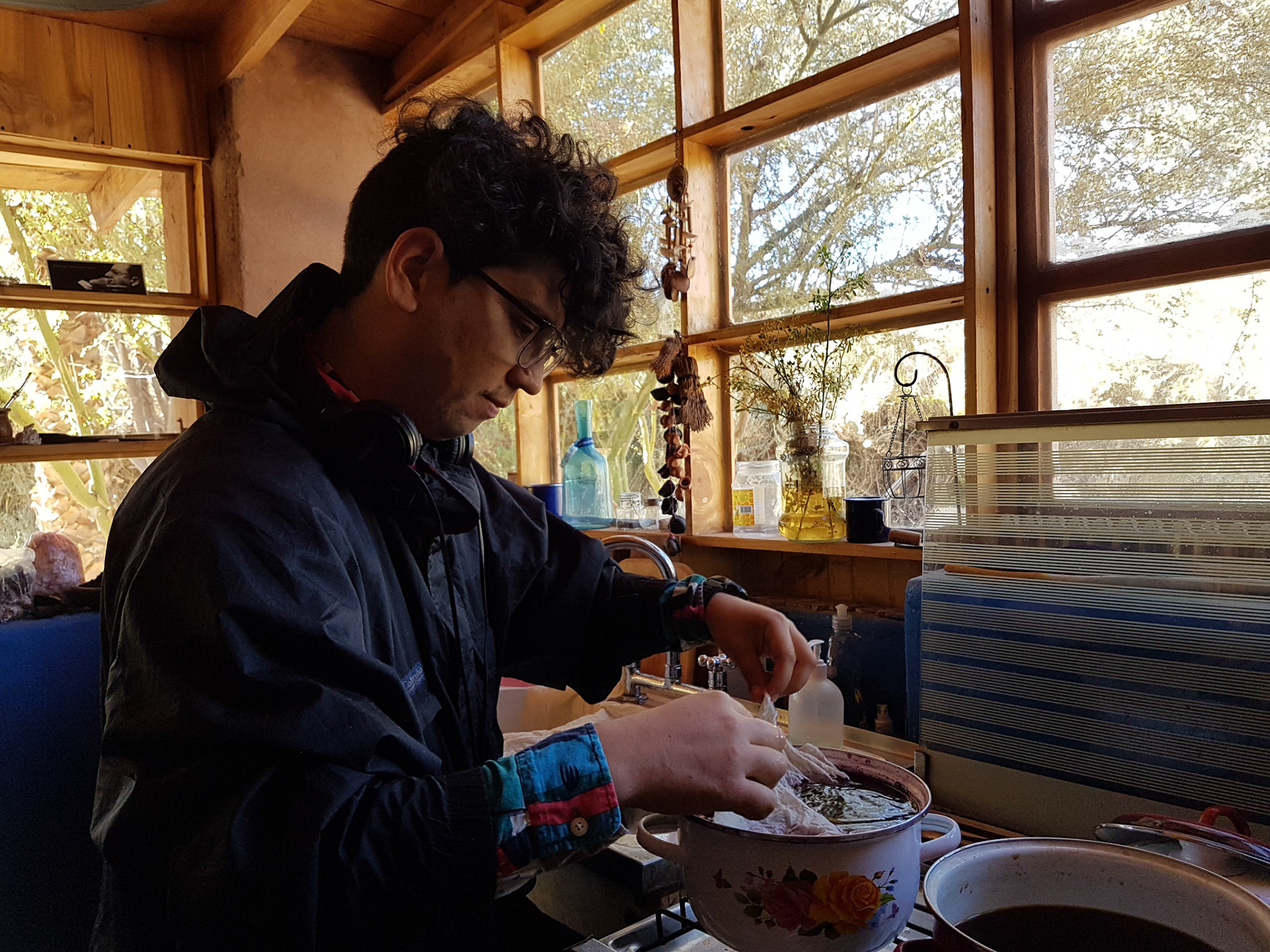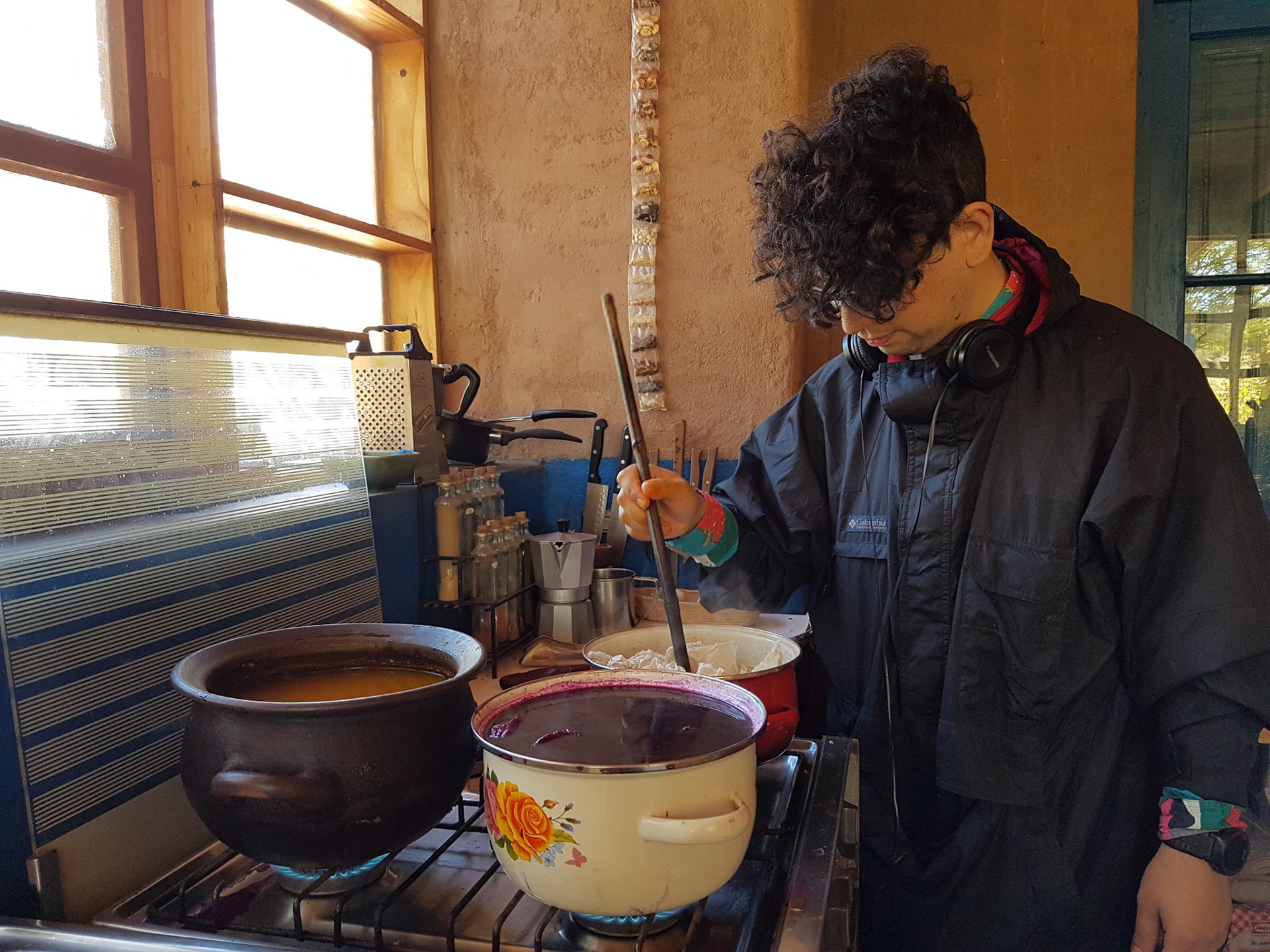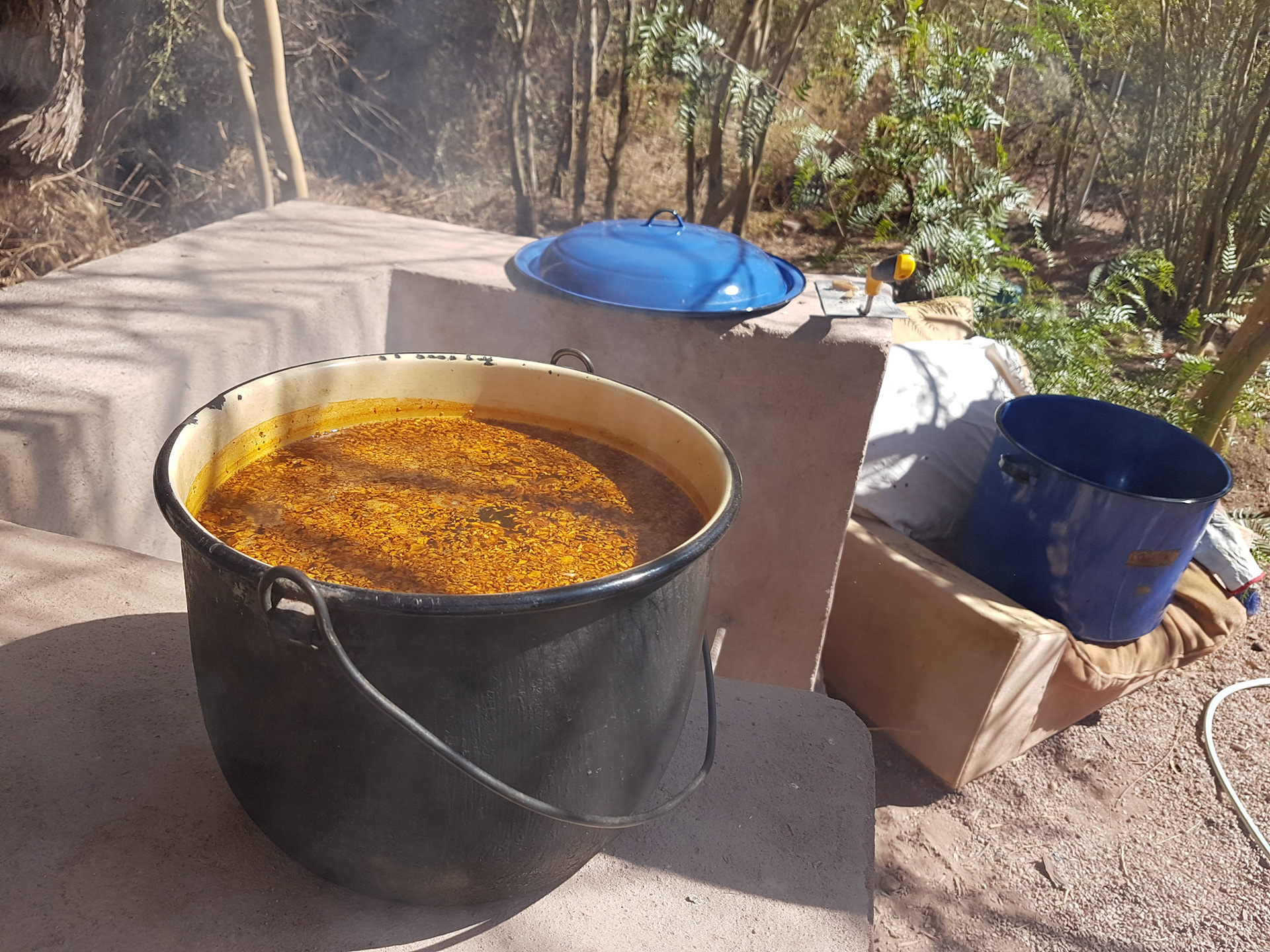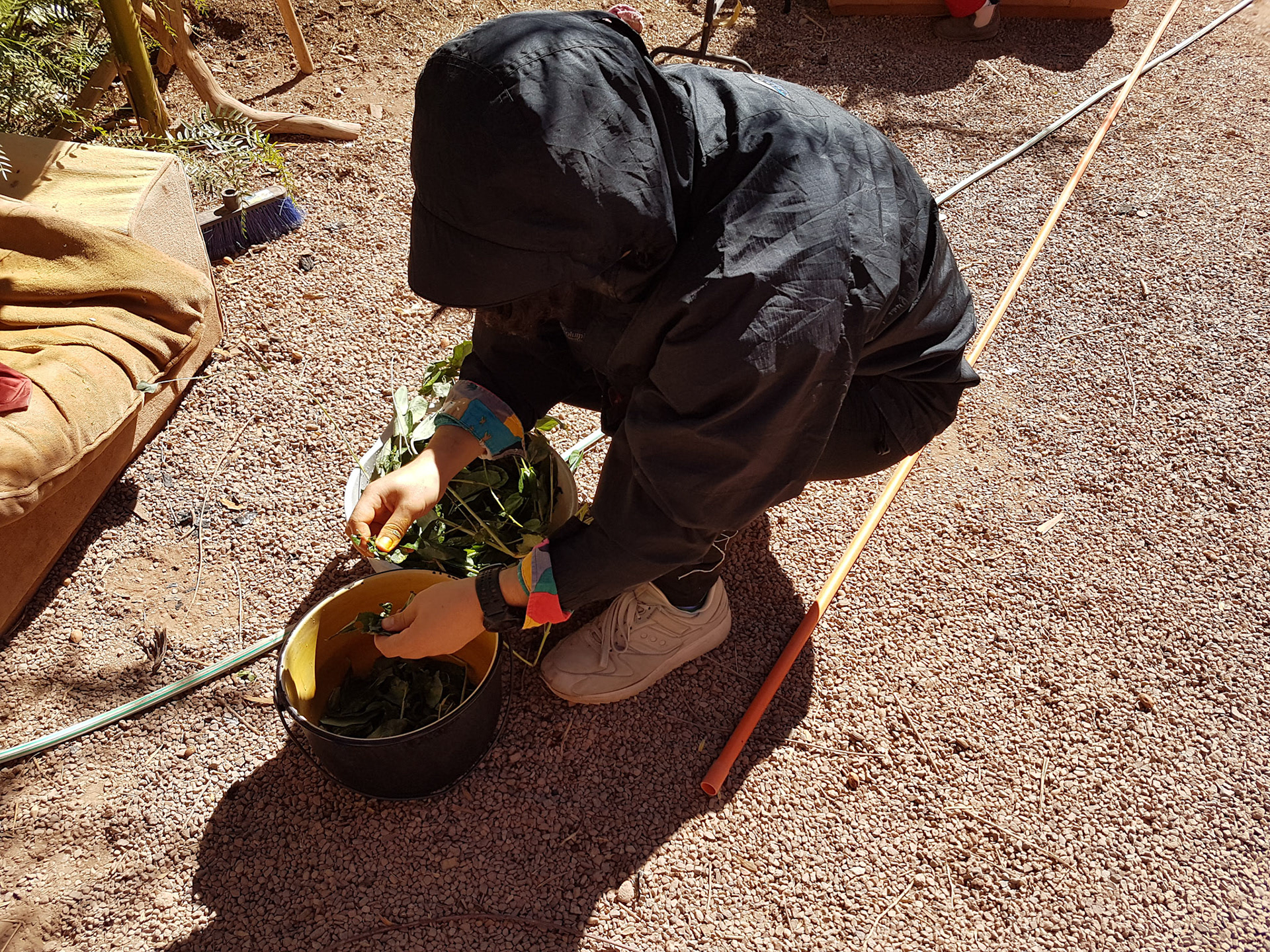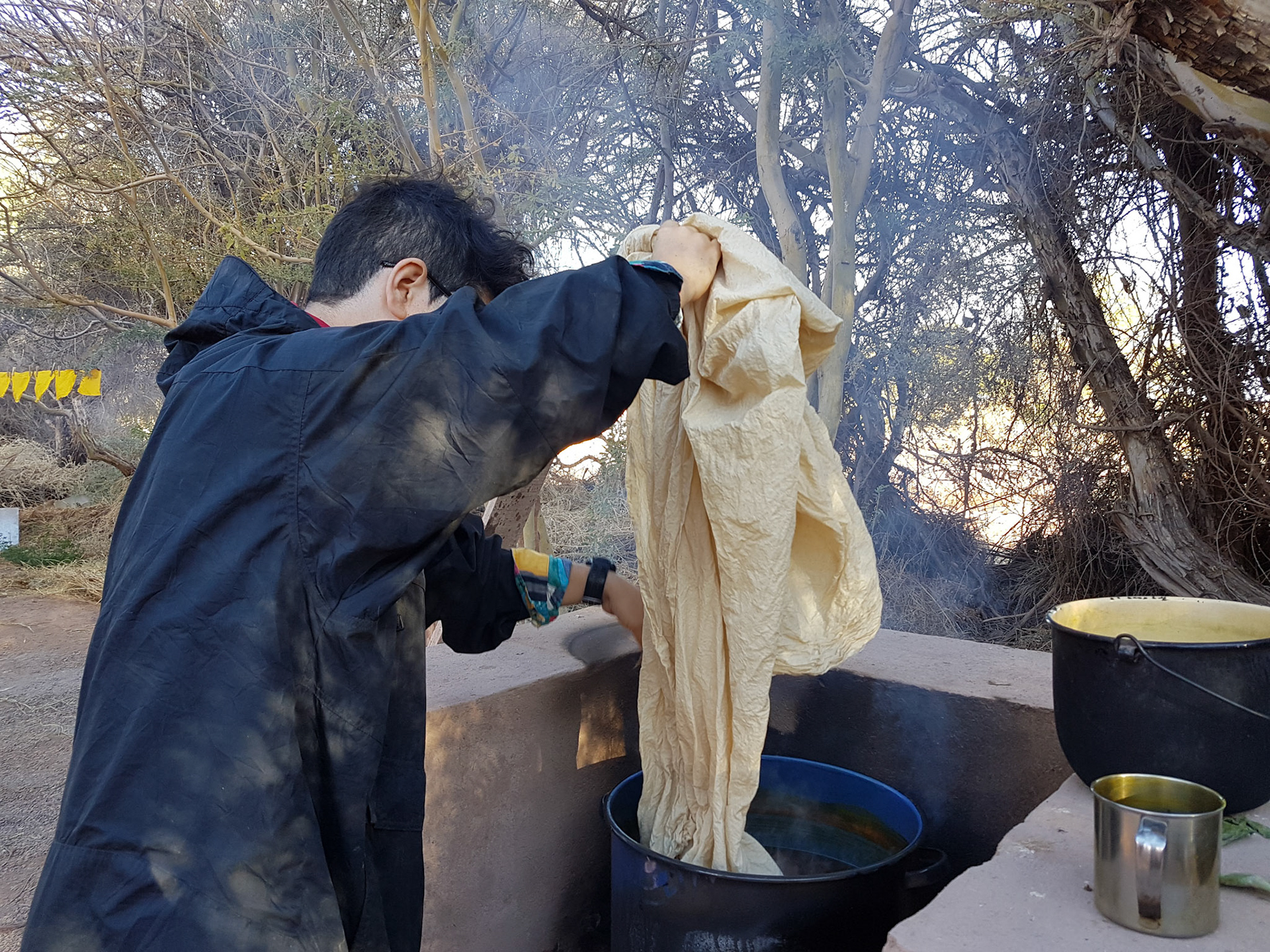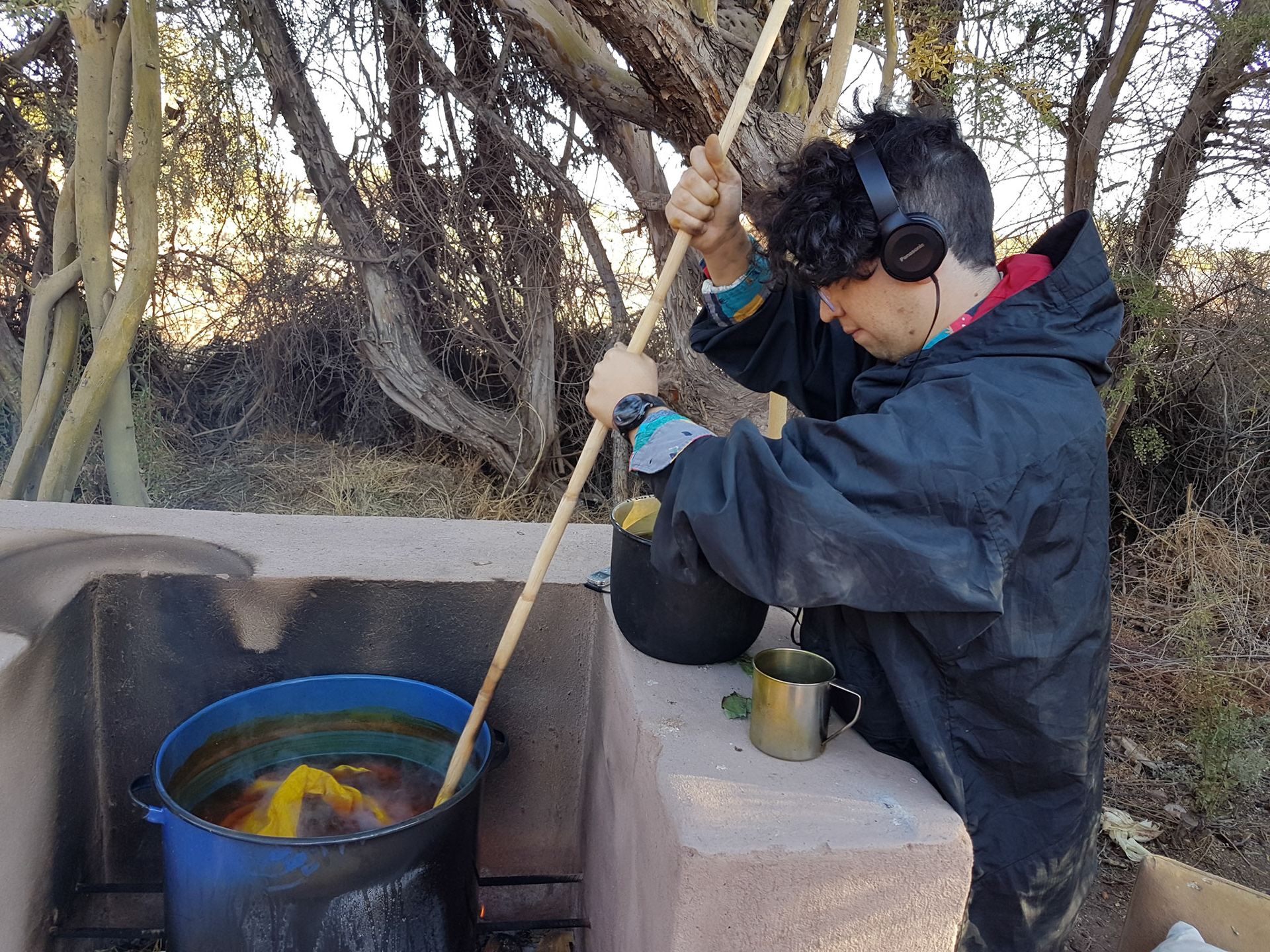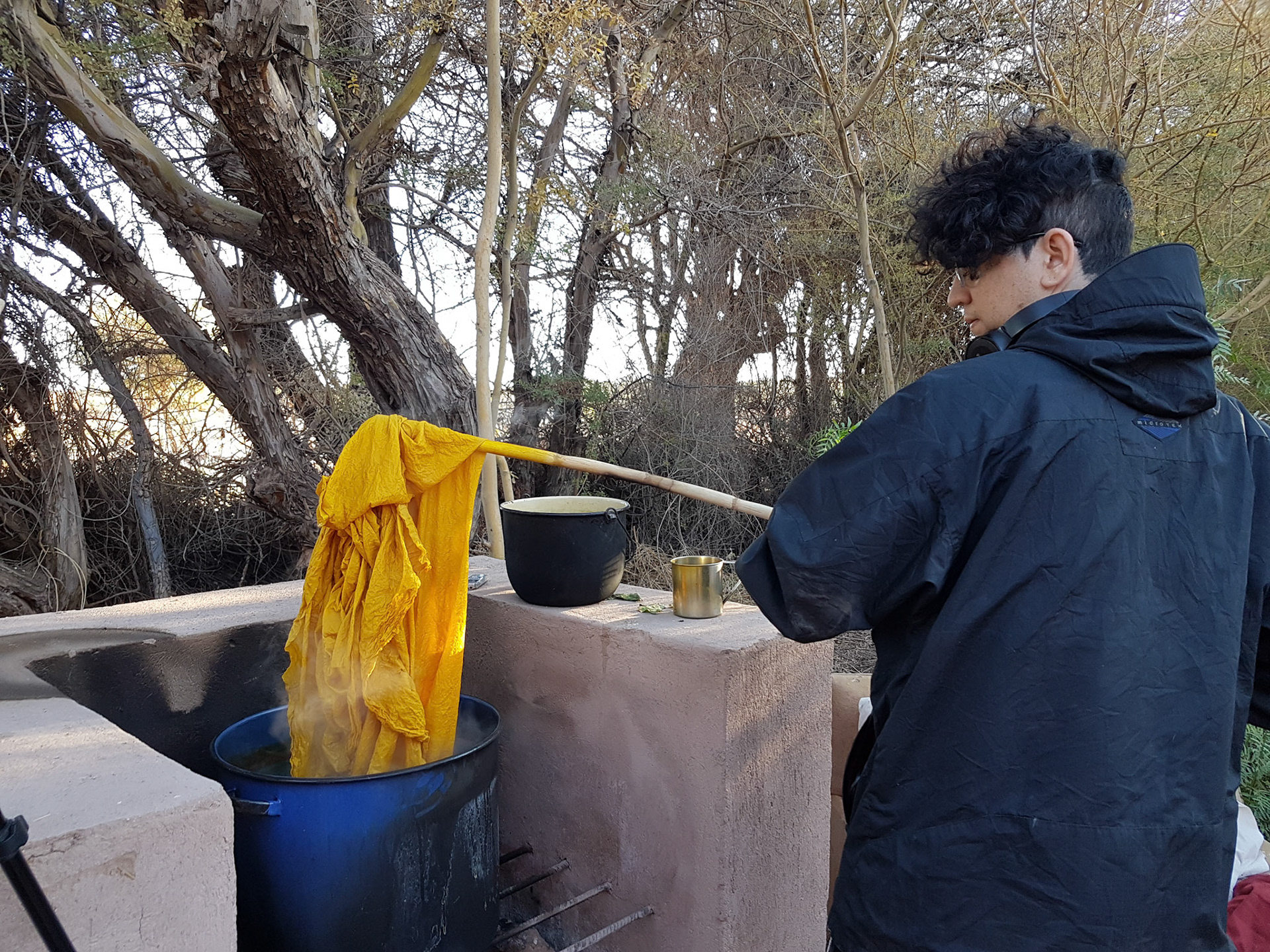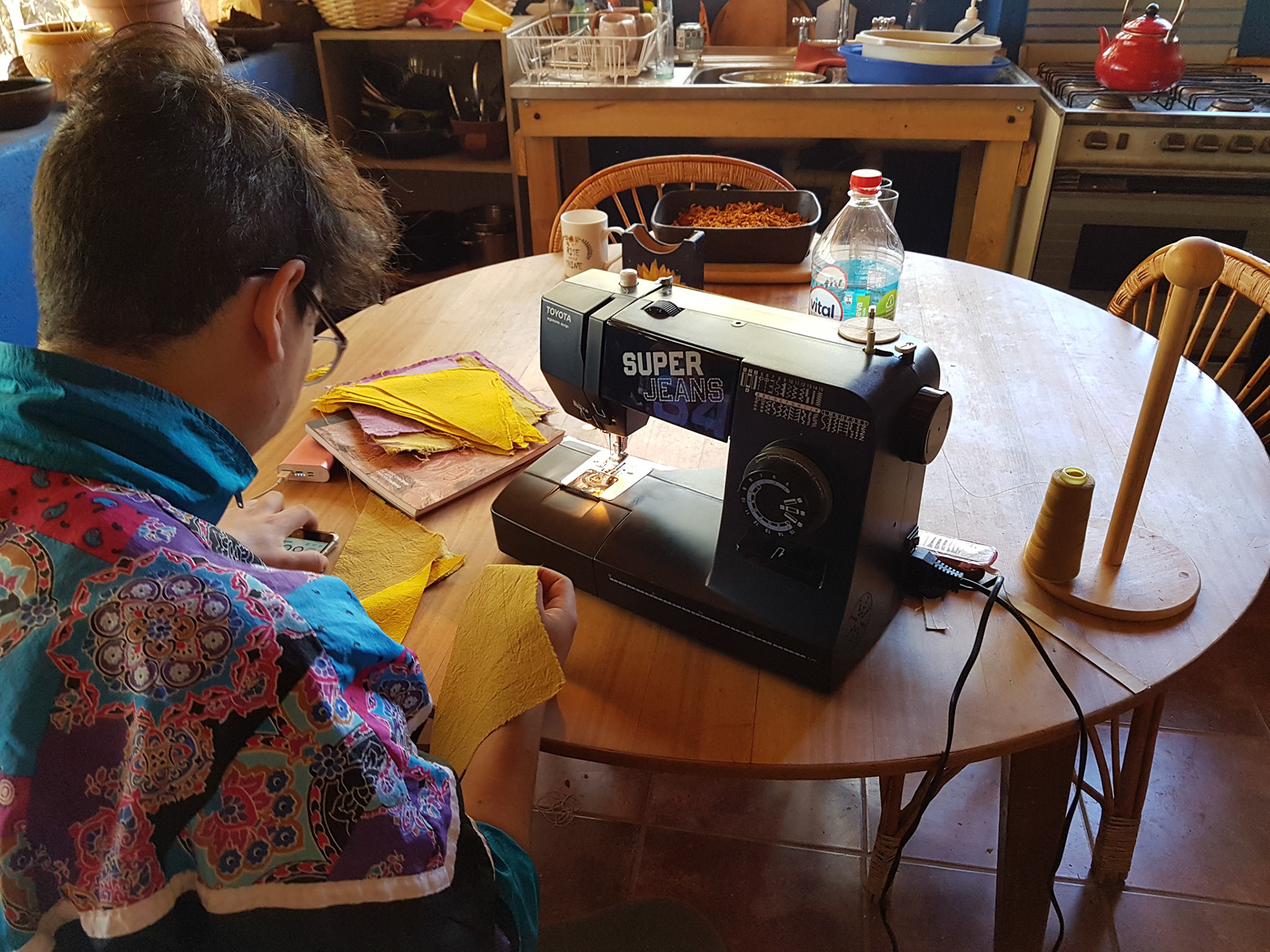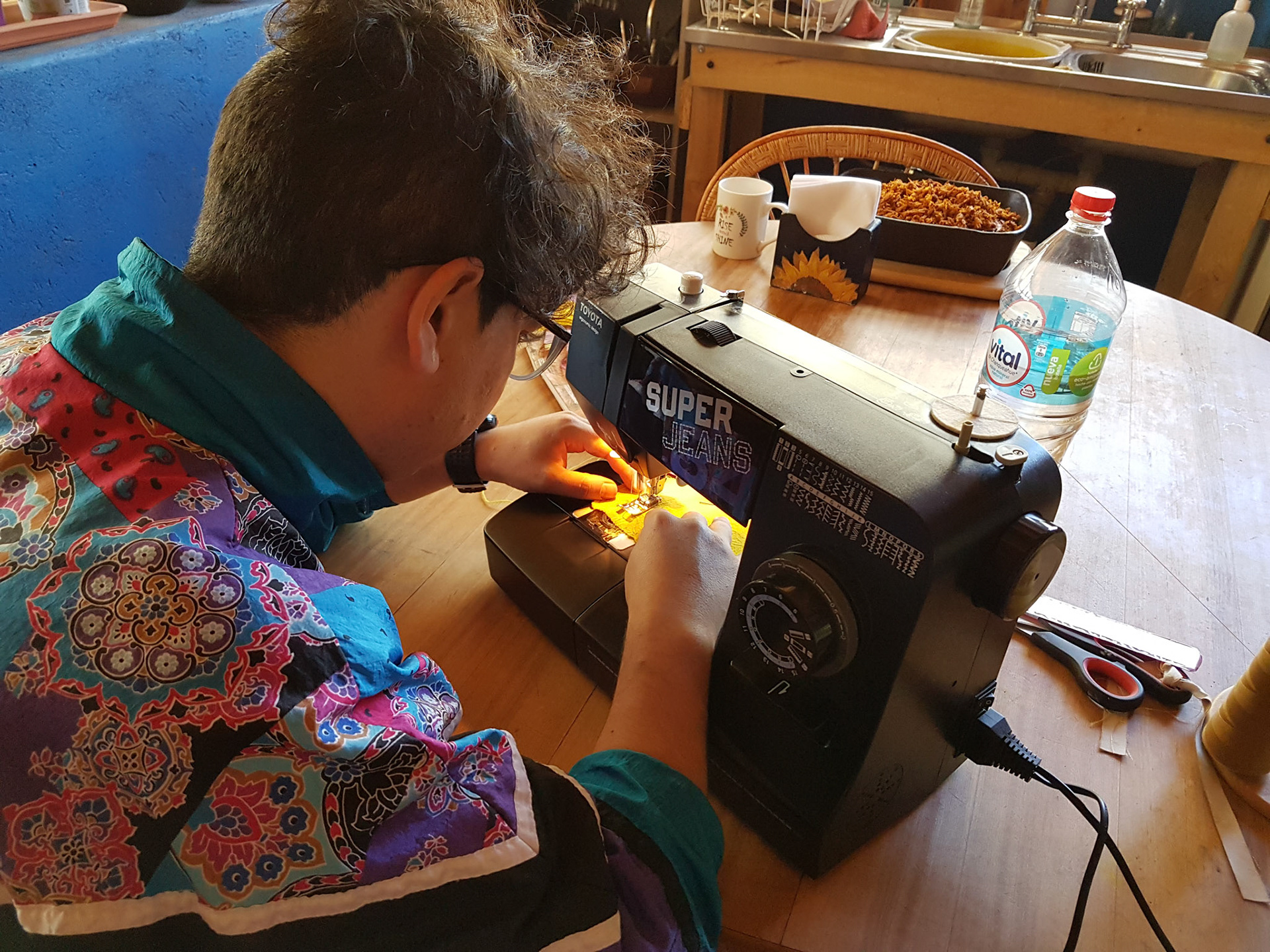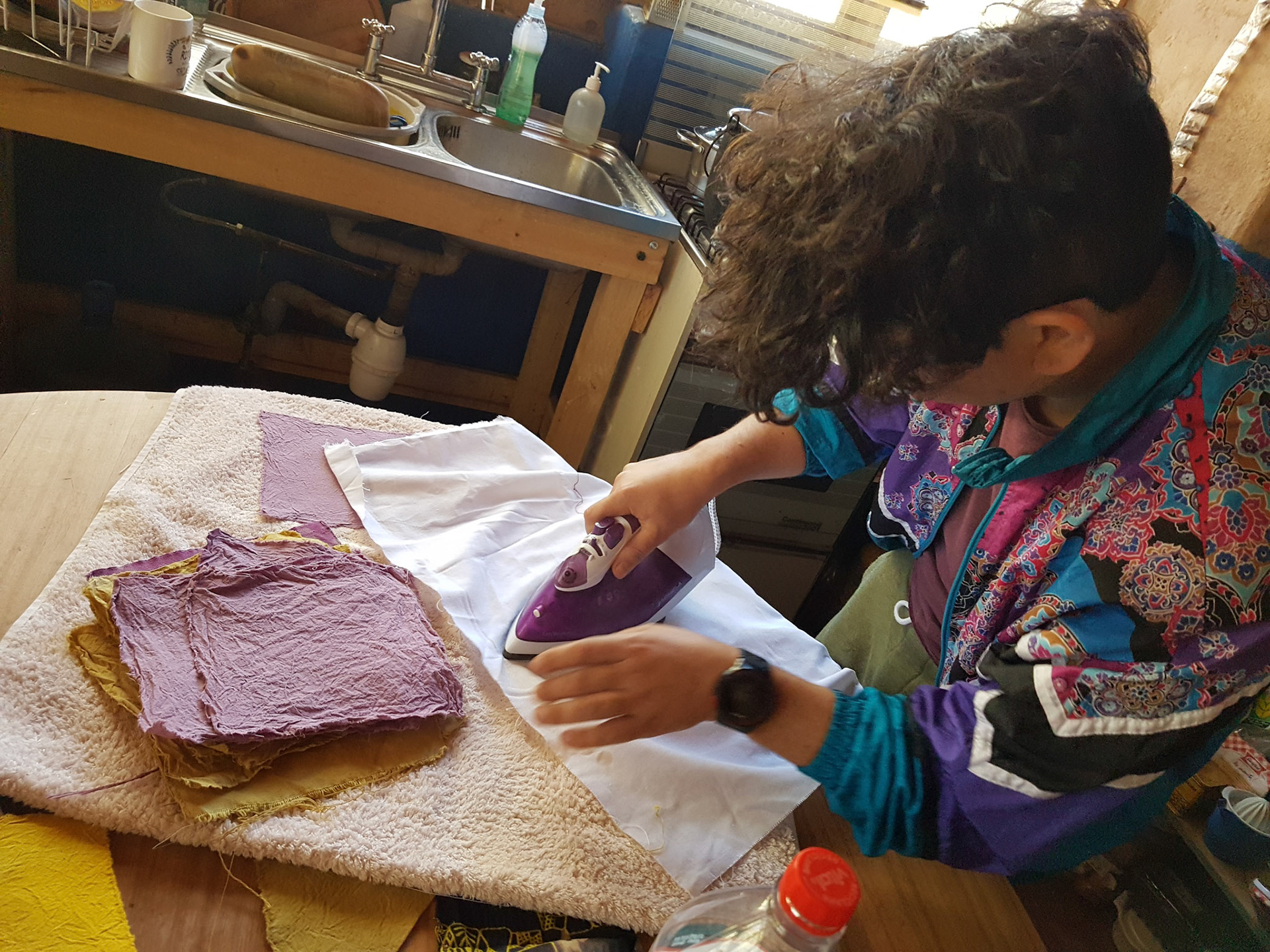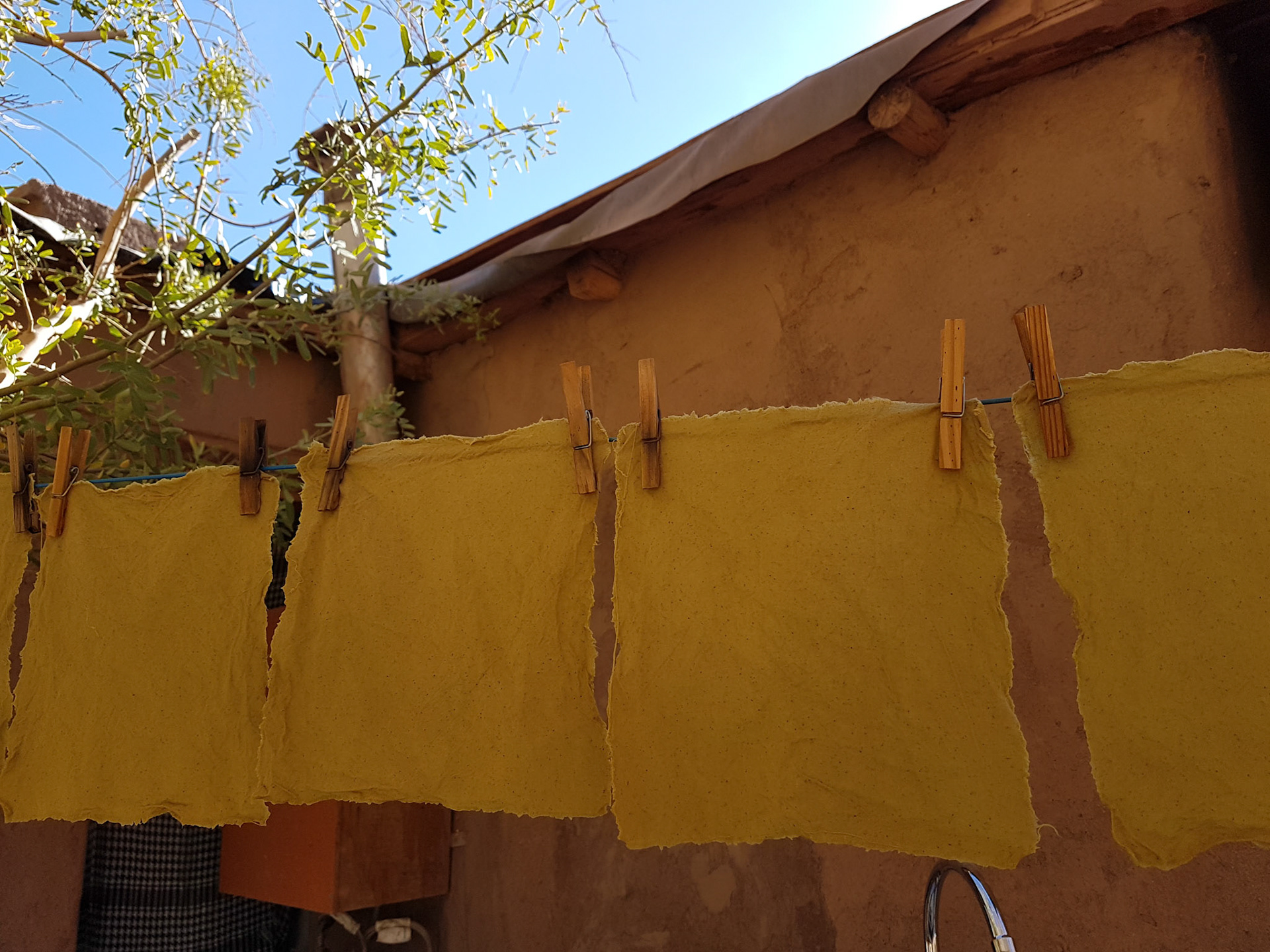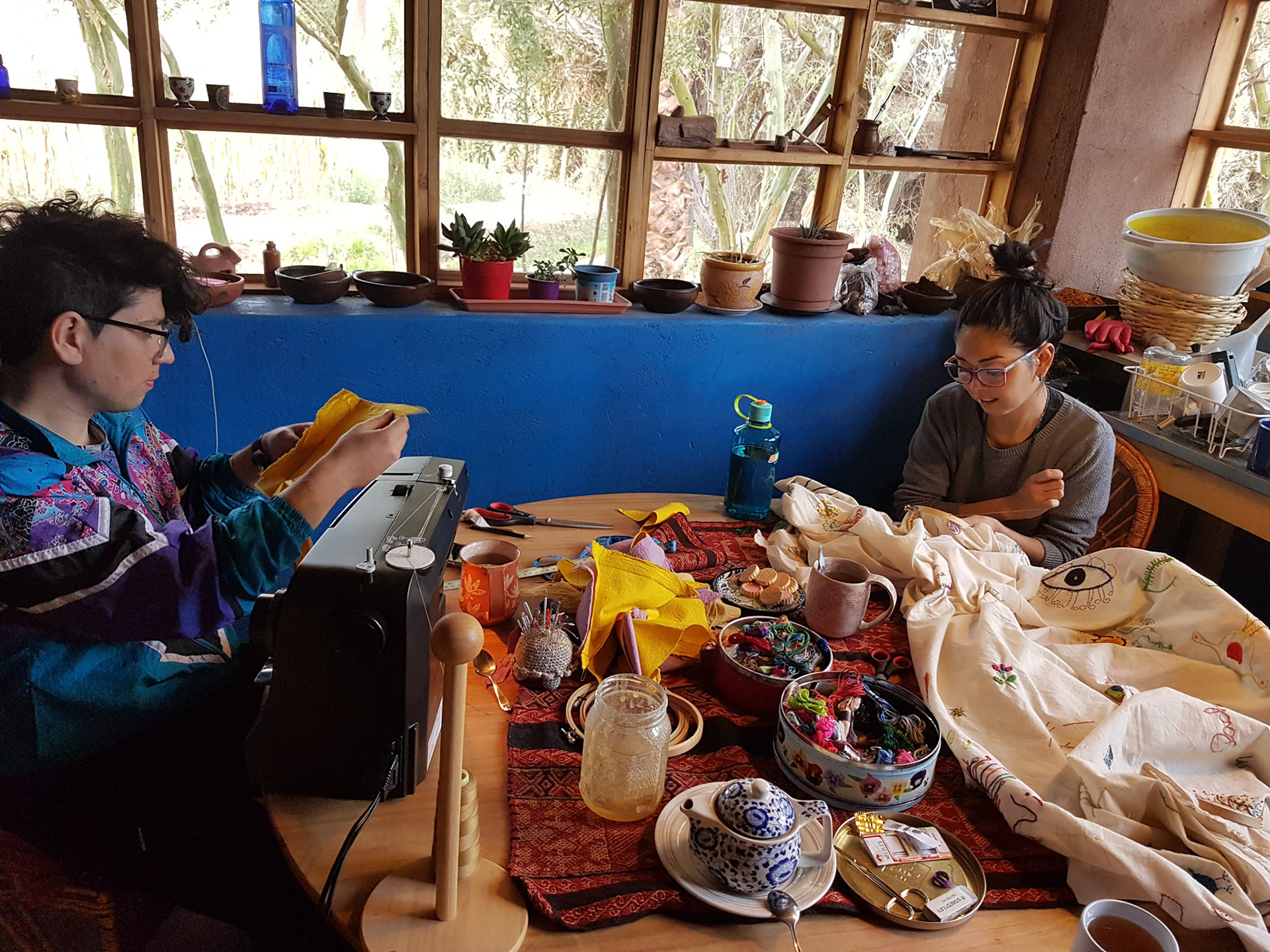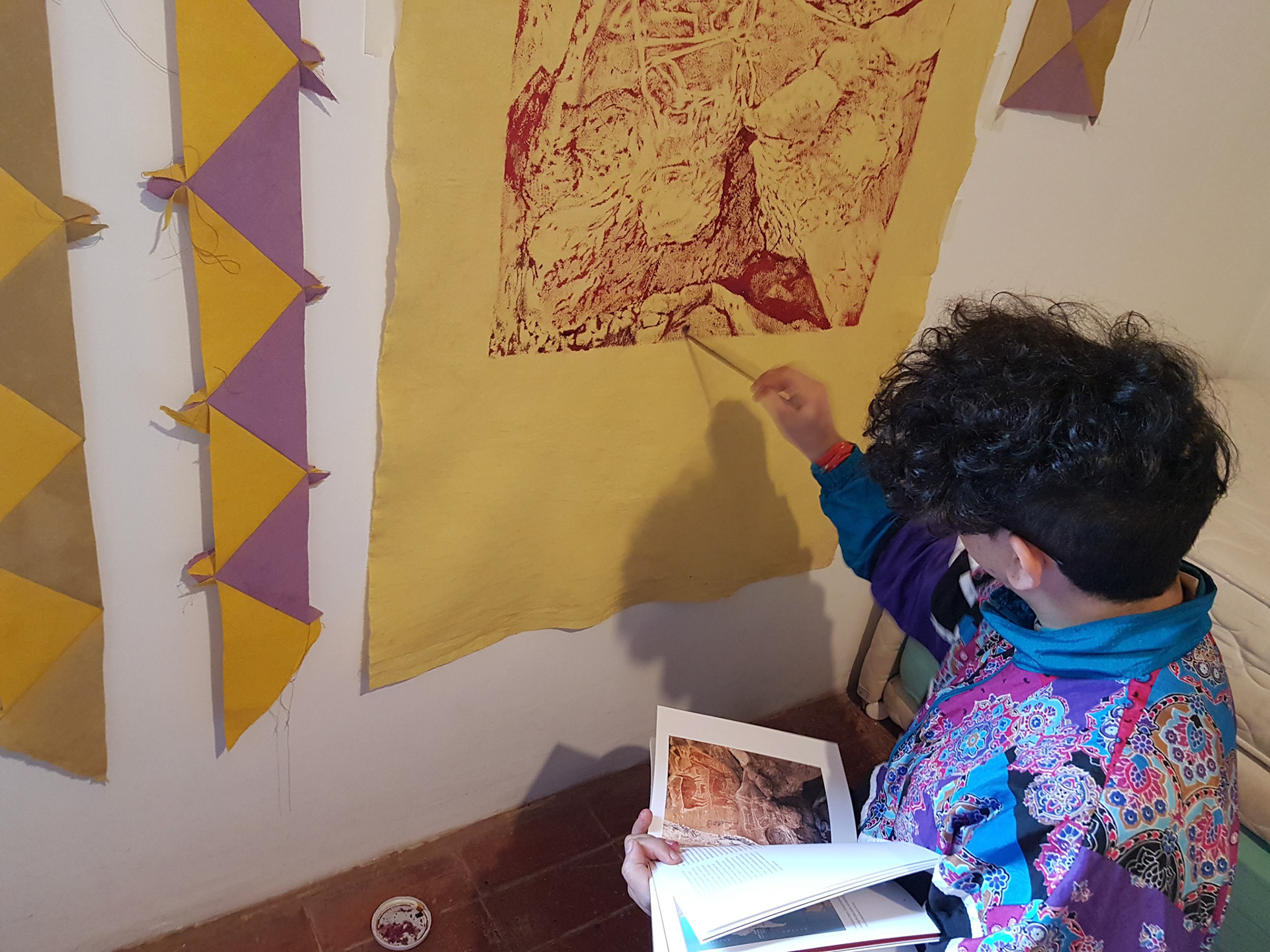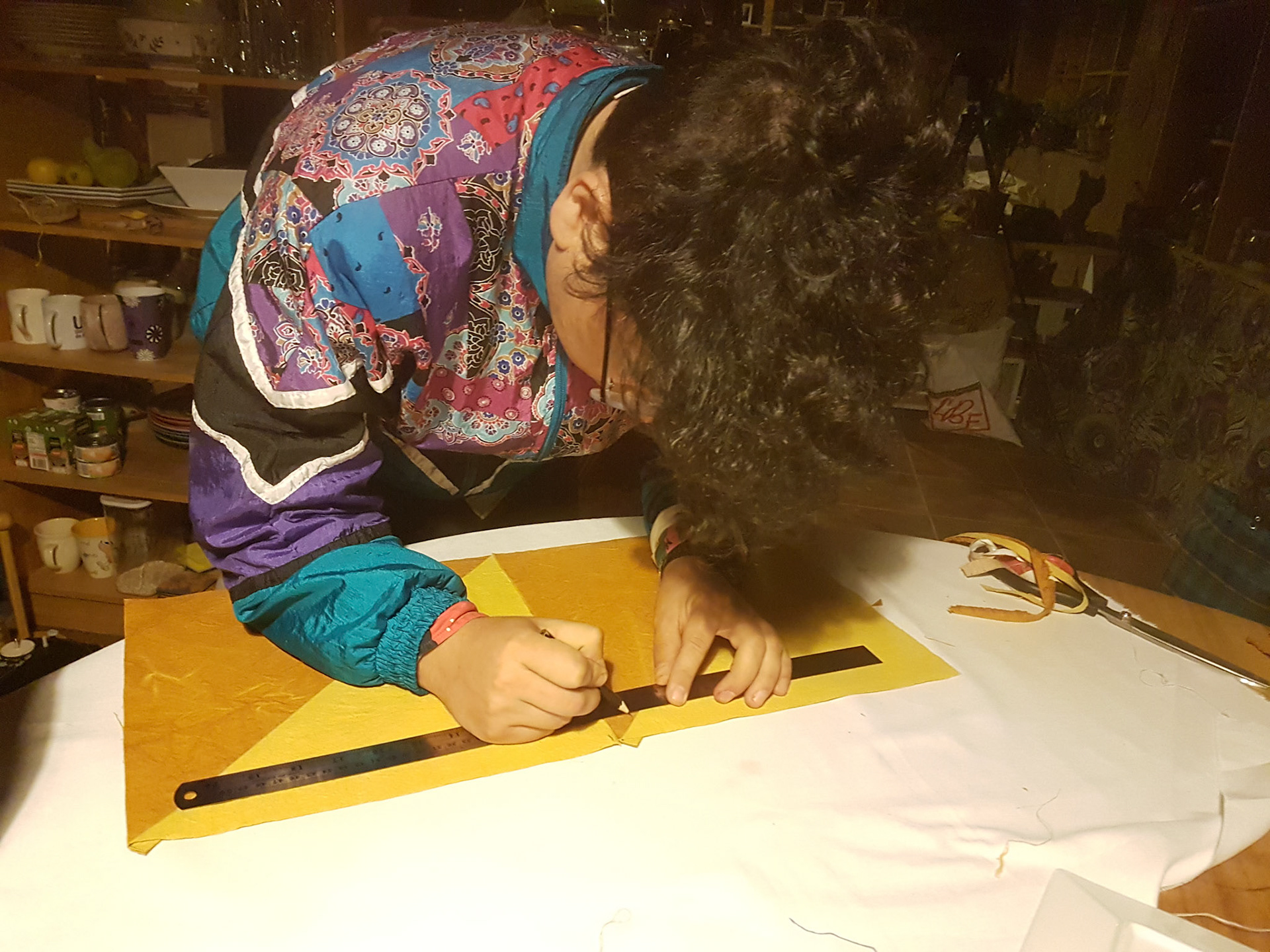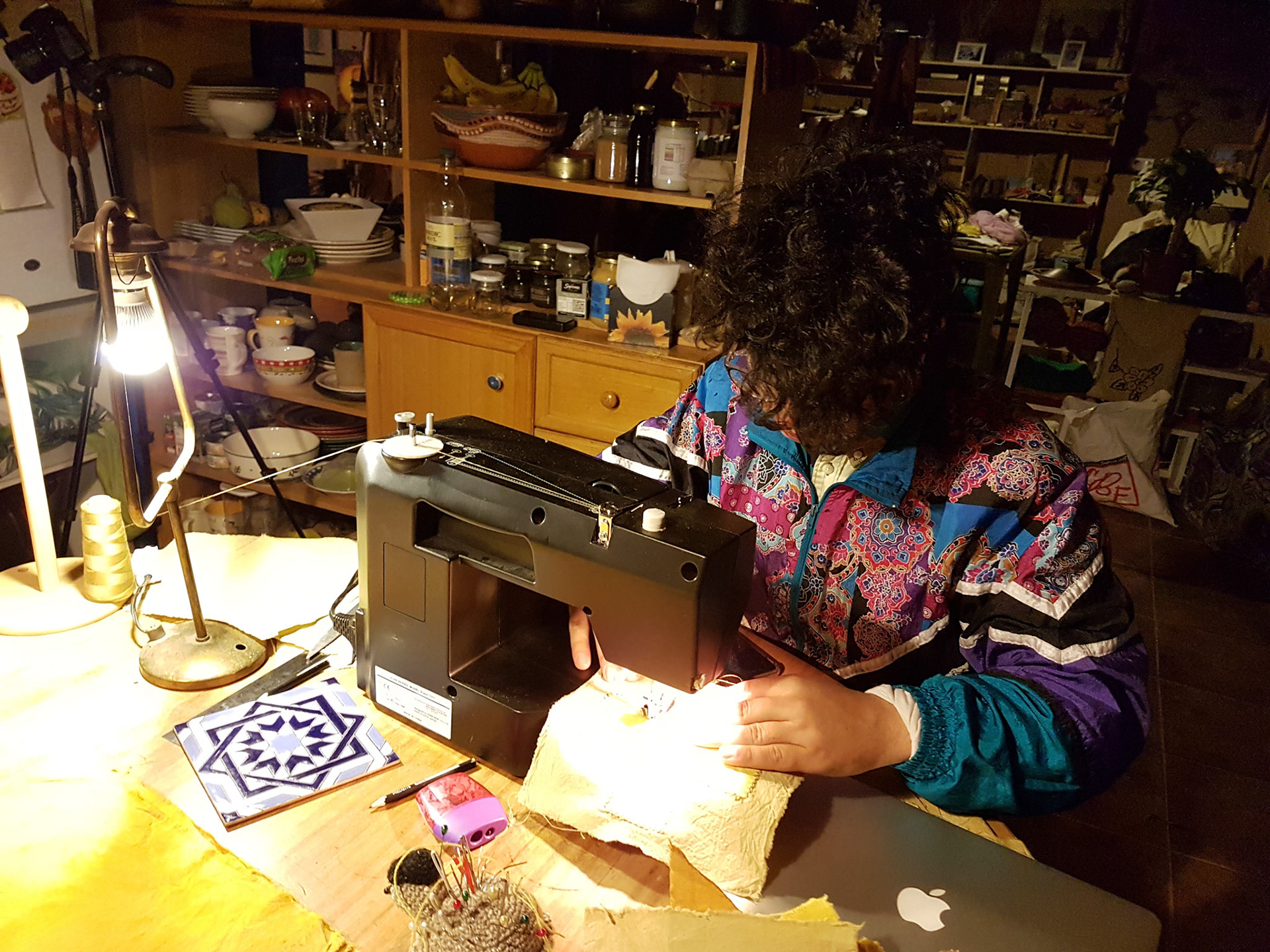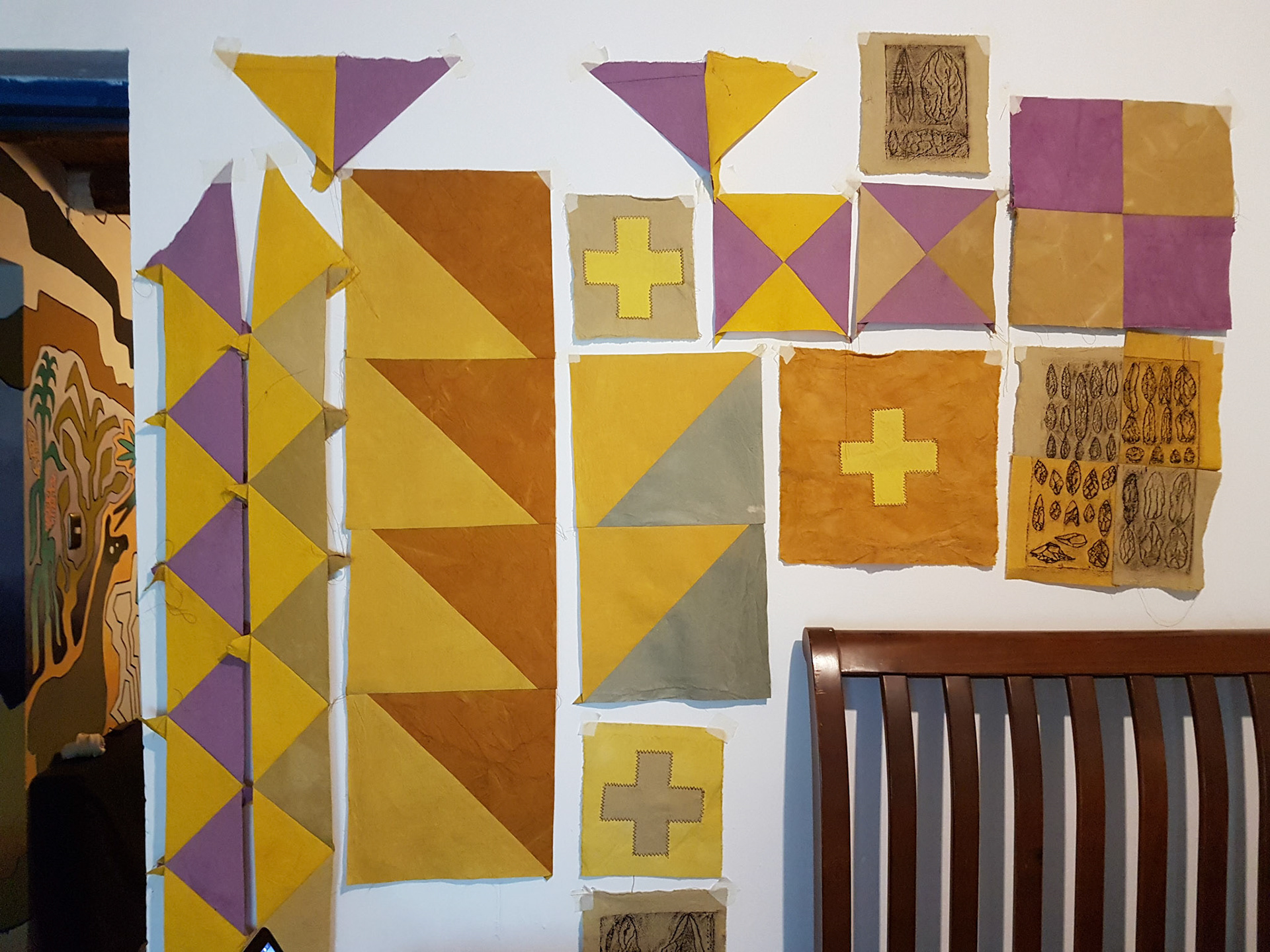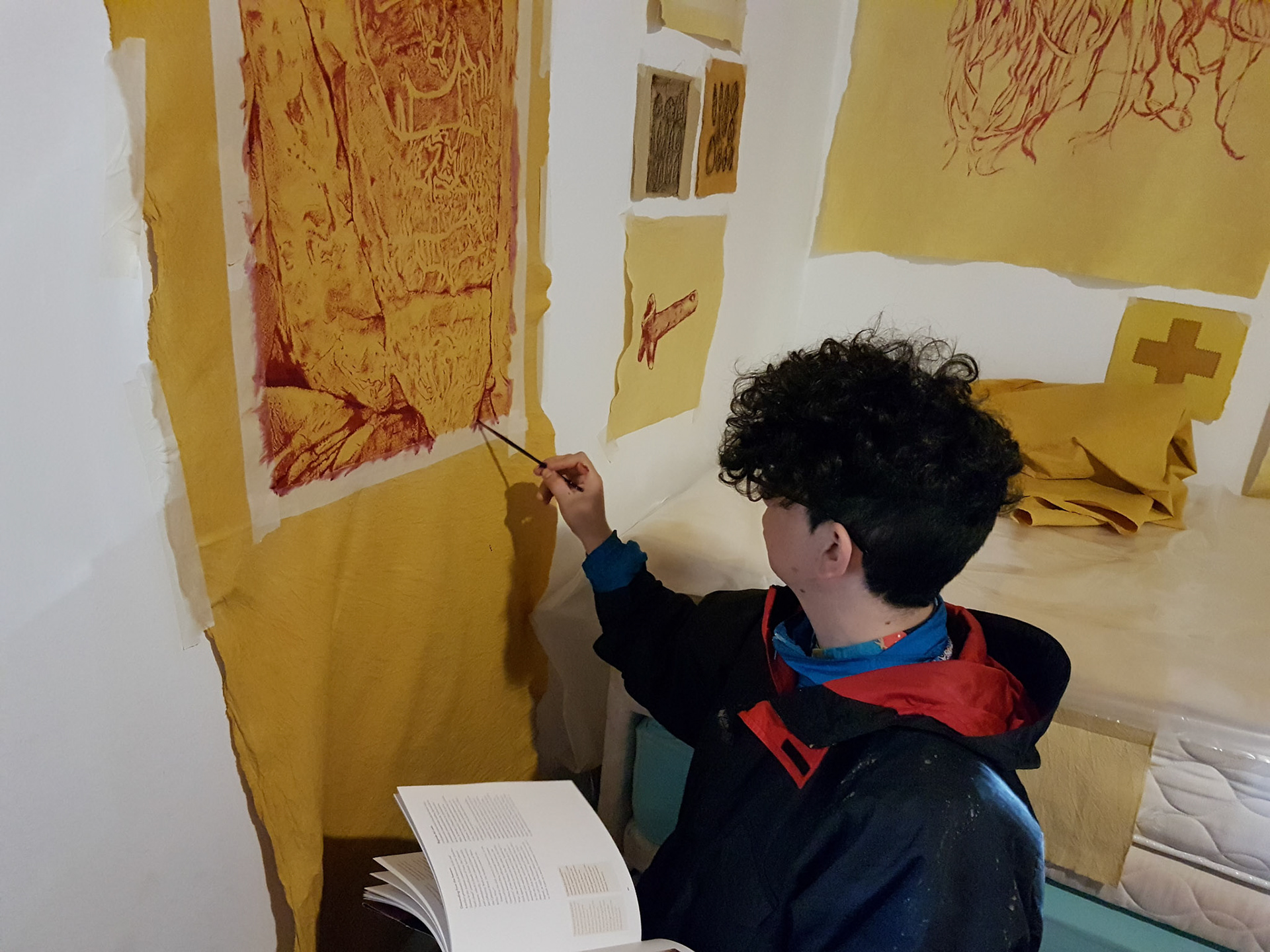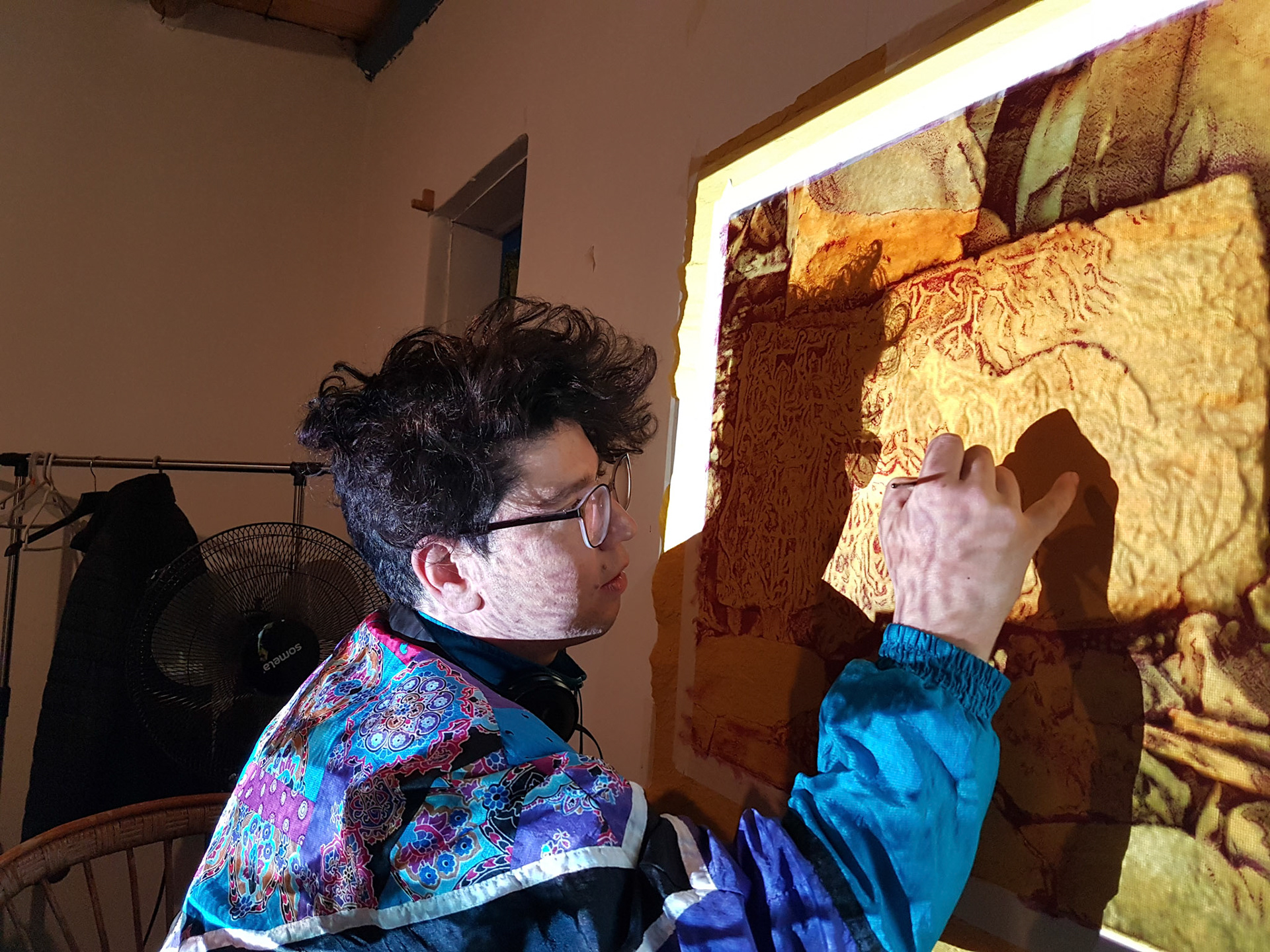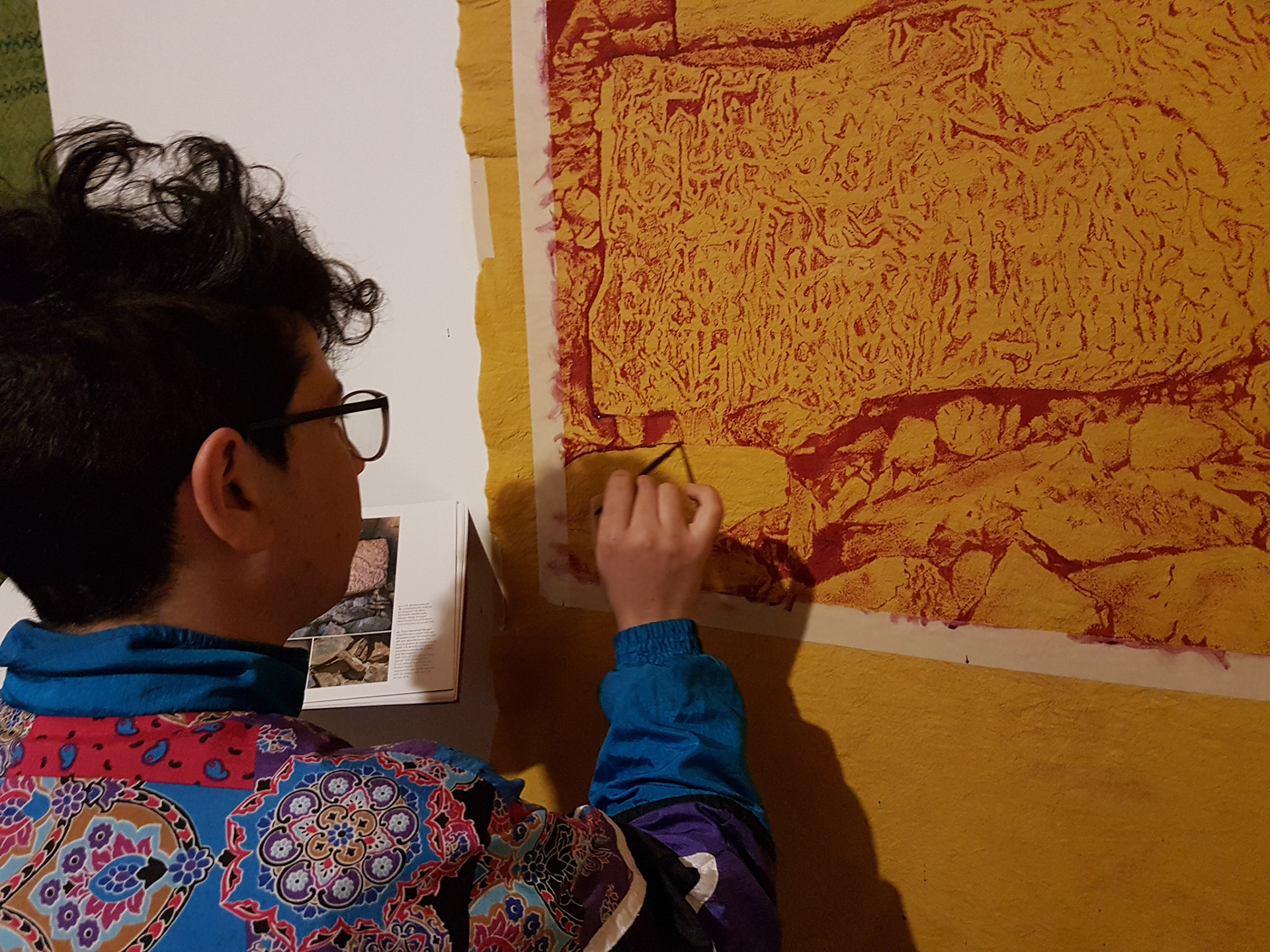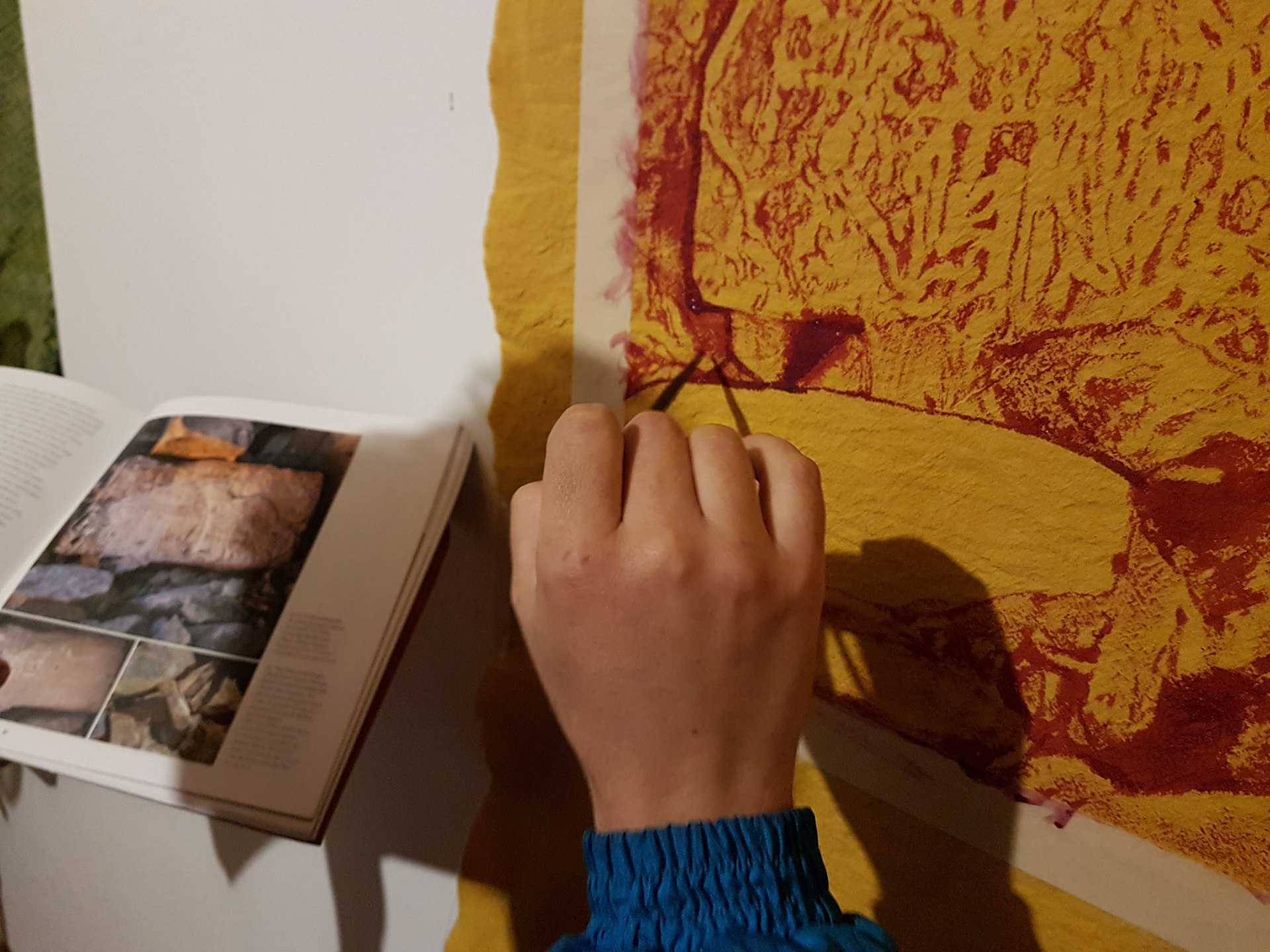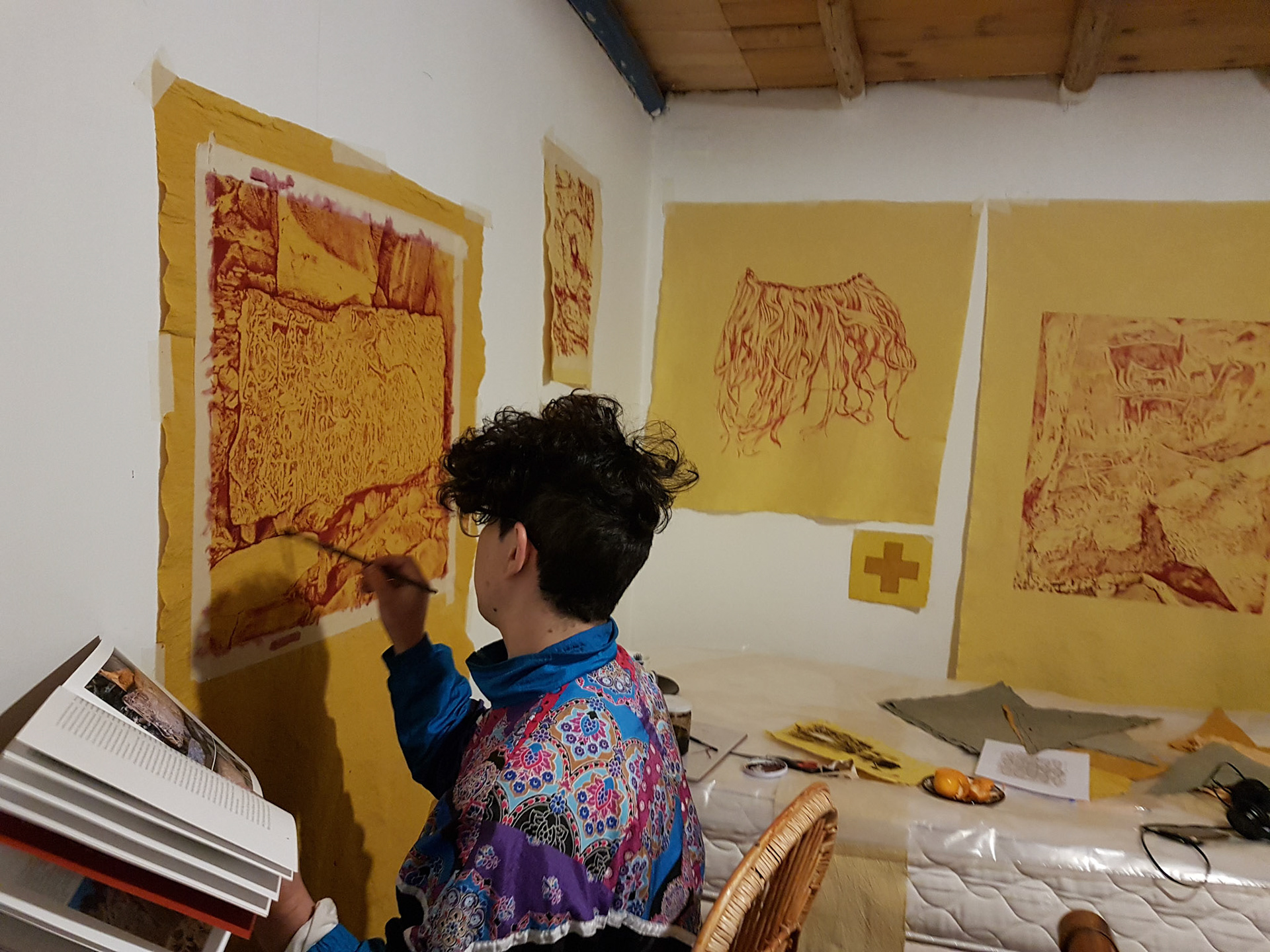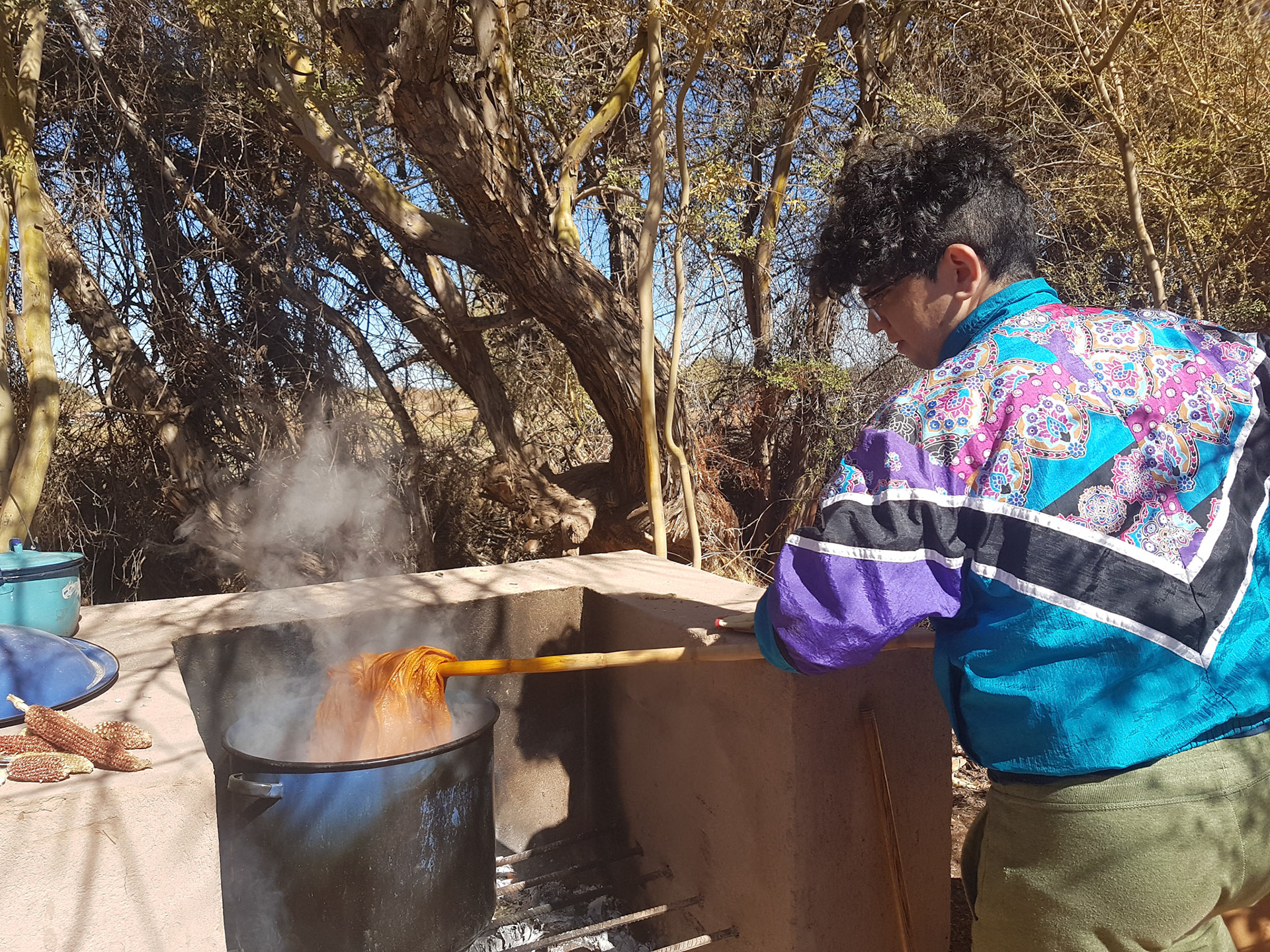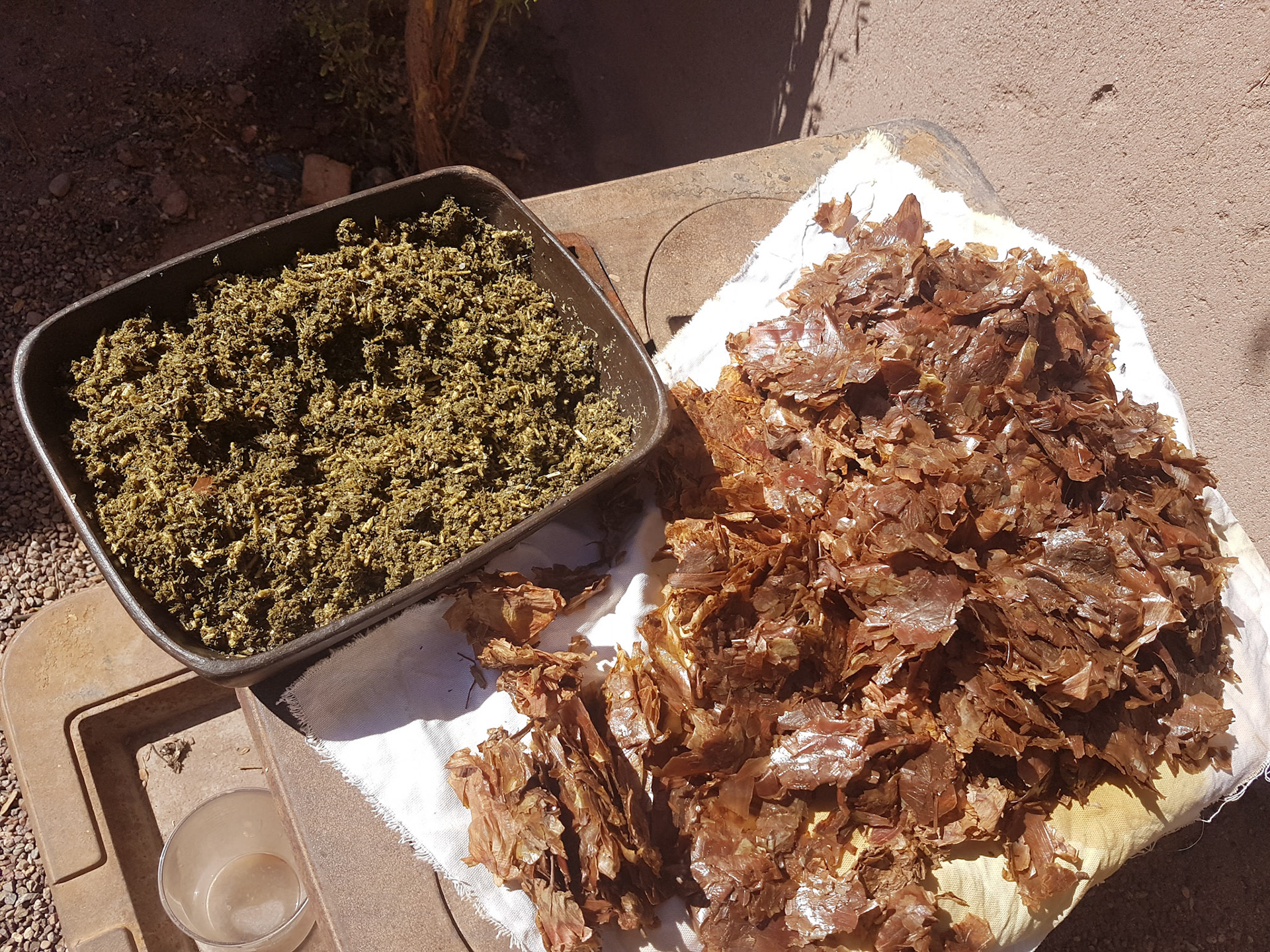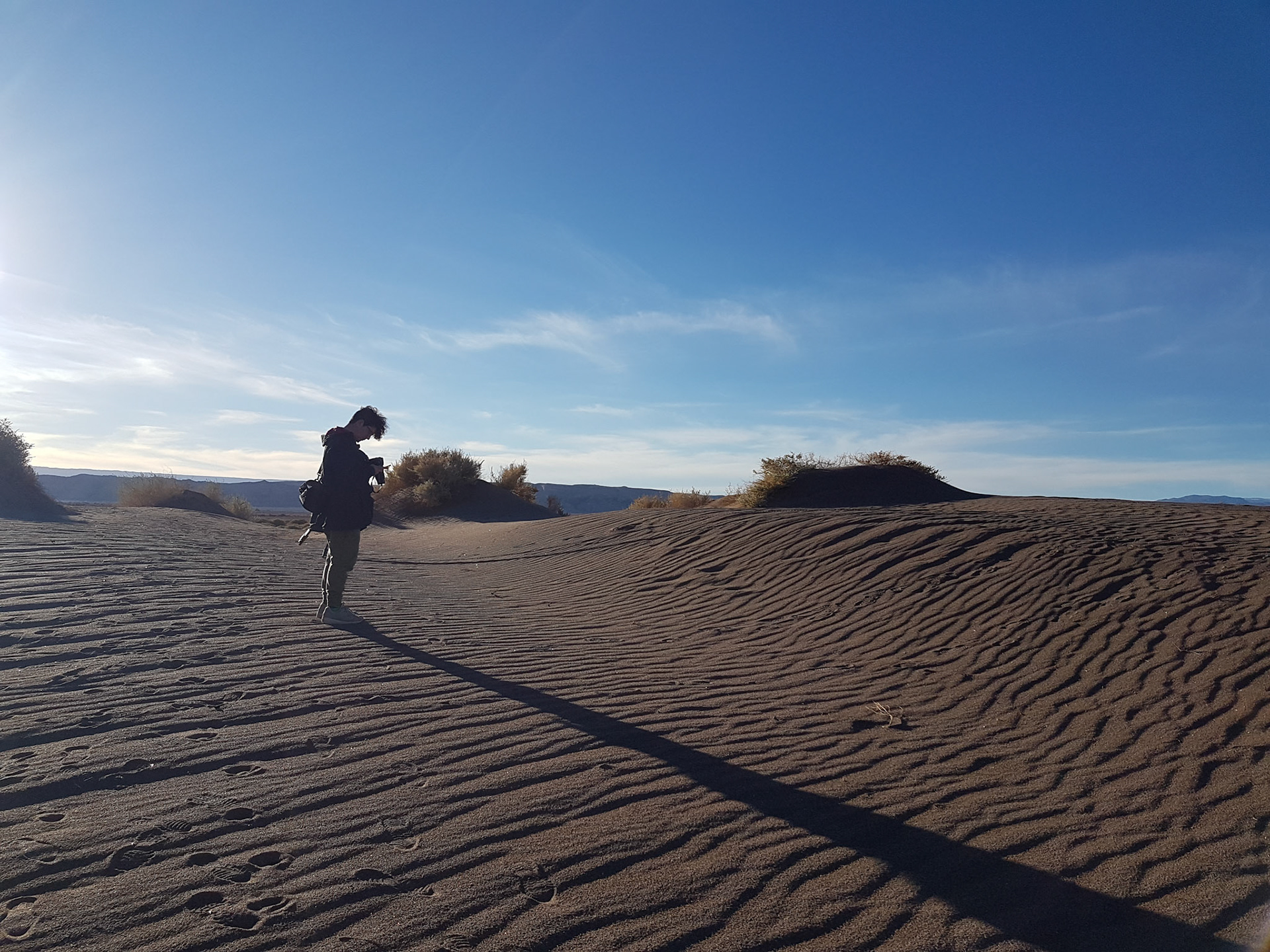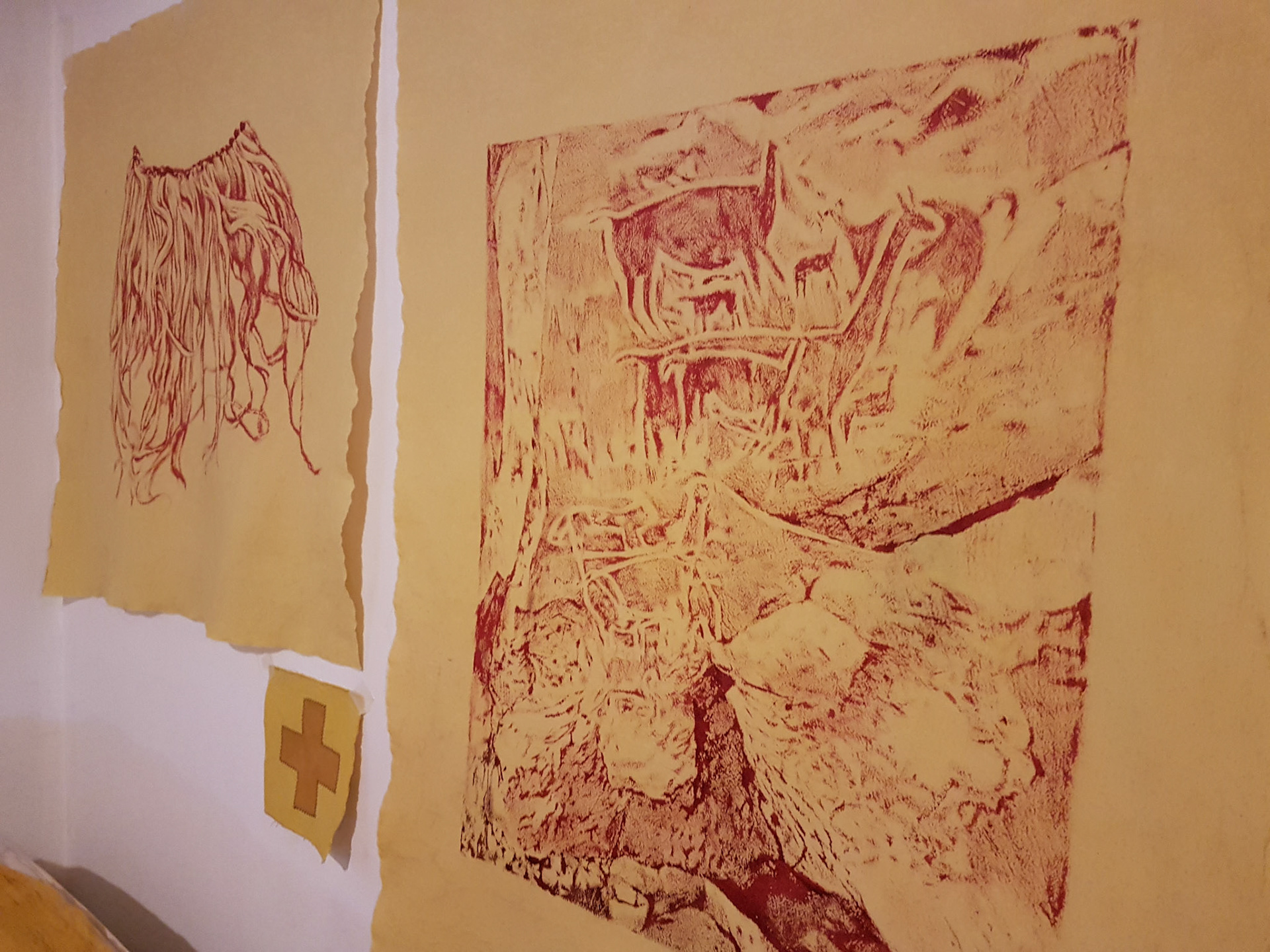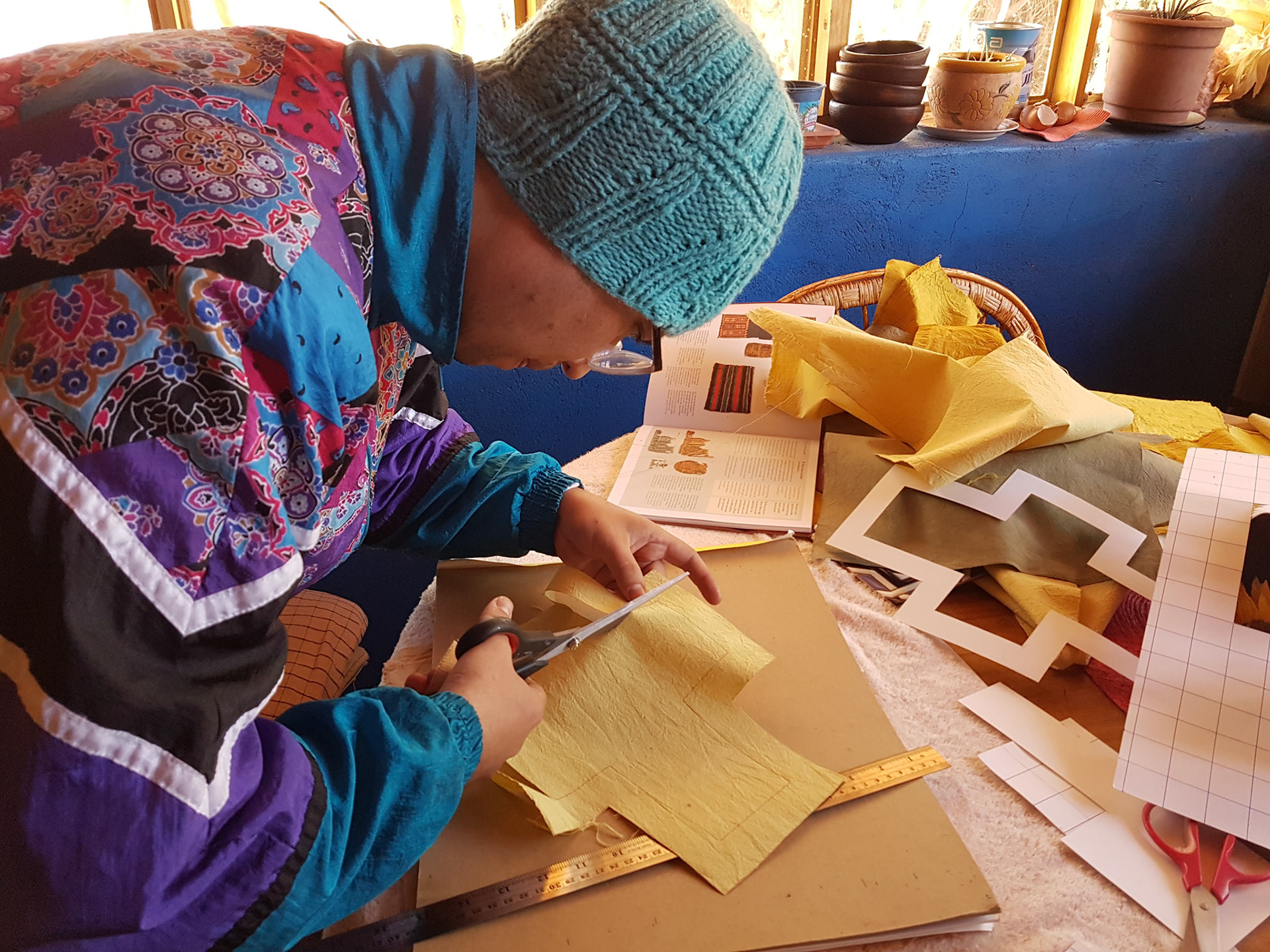2021
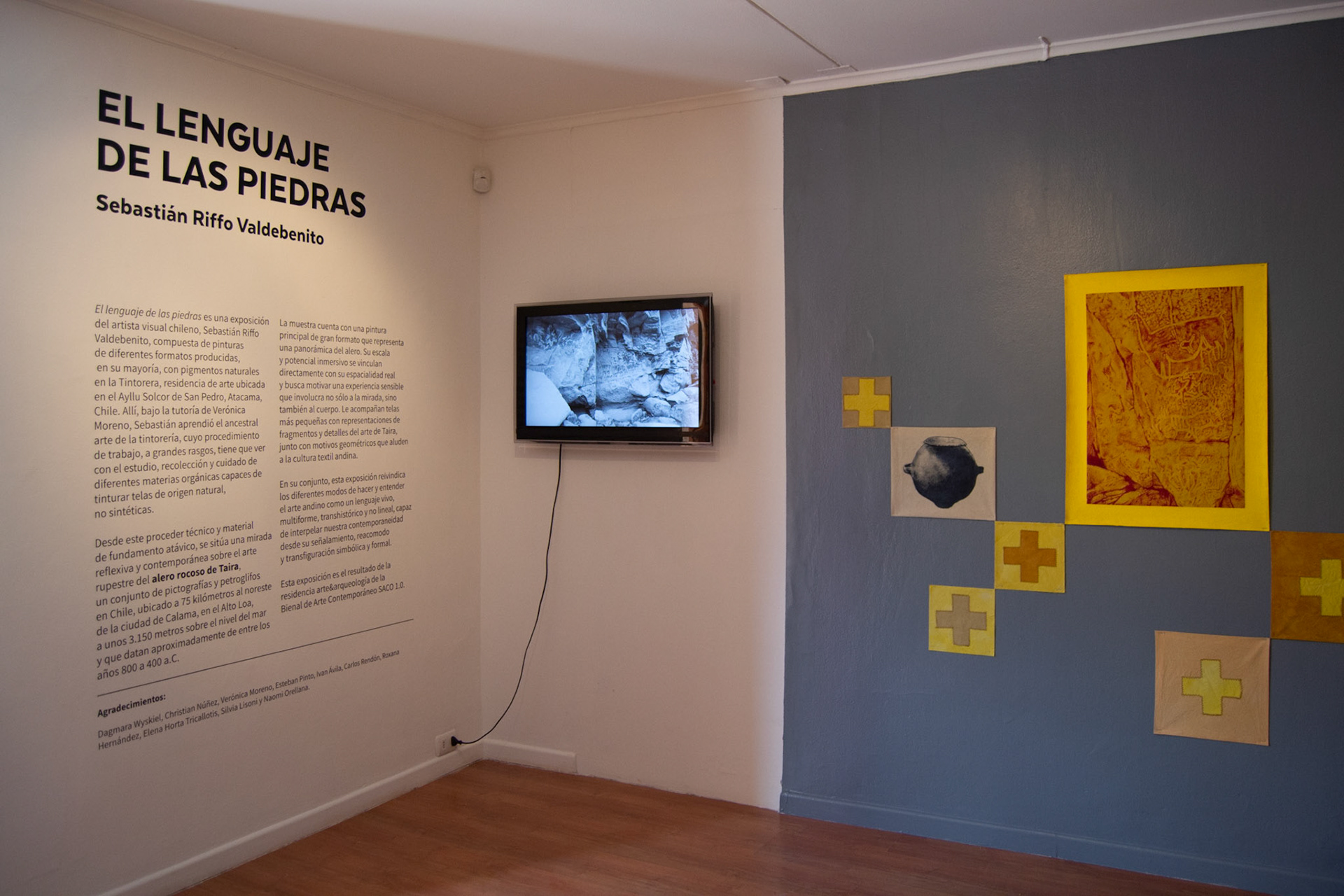

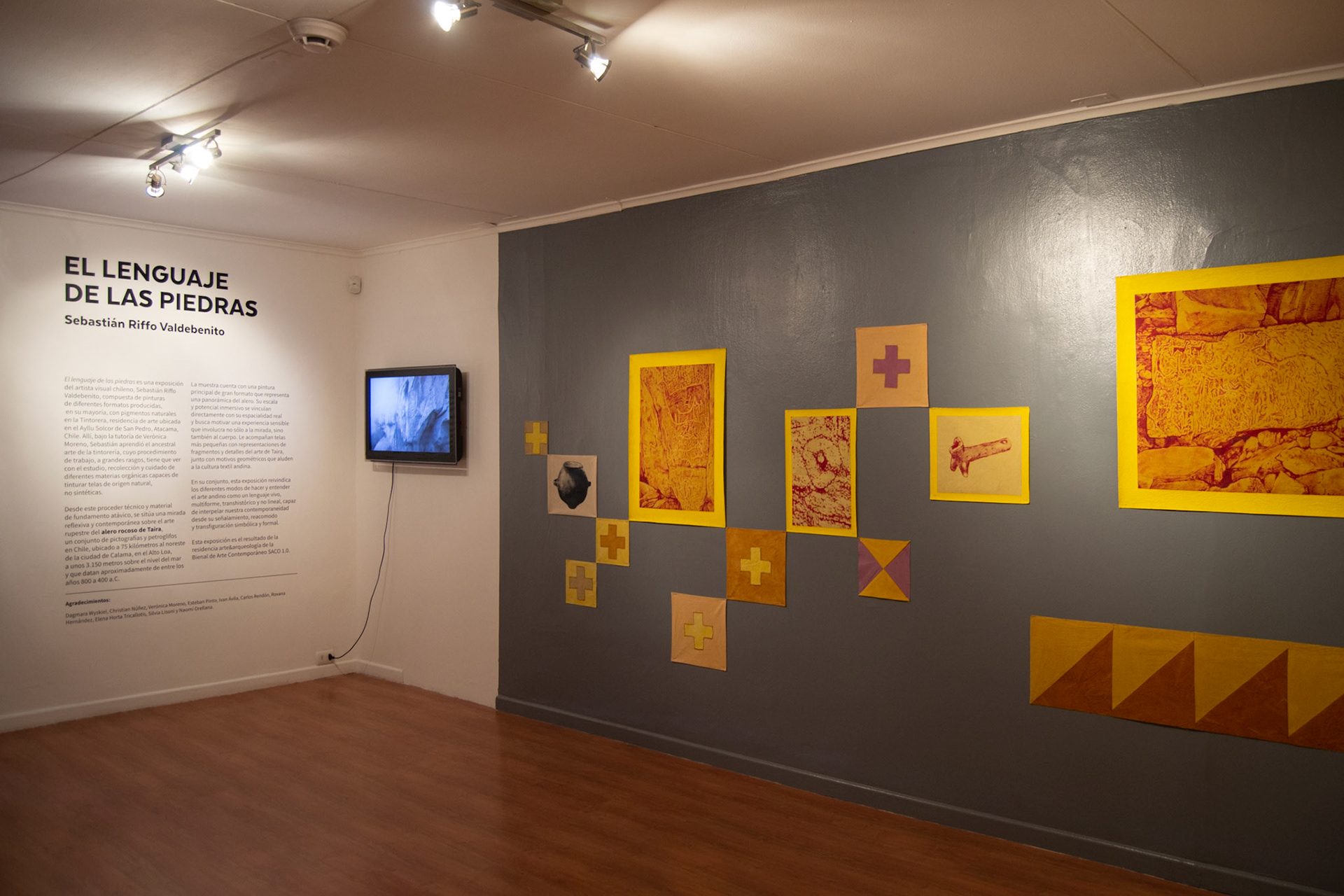
ES
El lenguaje de las piedras es una exposición del artista visual chileno, Sebastián Riffo Valdebenito, compuesta de pinturas de diferentes formatos producidas, en su mayoría, con pigmentos naturales en la Tintorera, residencia de arte ubicada en el Ayllu Solcor de San Pedro, Atacama, Chile. Allí, bajo la tutoría de Verónica Moreno, Sebastián aprendió el ancestral arte de la tintorería, cuyo procedimiento de trabajo, a grandes rasgos, tiene que ver con el estudio, recolección y cuidado de diferentes materias orgánicas capaces de tinturar telas de origen natural, no sintéticas.
Desde este proceder técnico y material de fundamento atávico, se sitúa una mirada reflexiva y contemporánea sobre el arte rupestre del alero rocoso de Taira, un conjunto de pictografías y petroglifos en Chile, ubicado a 75 kilómetros al noreste de la ciudad de Calama, en el Alto Loa, a unos 3.150 metros sobre el nivel del mar y que datan aproximadamente de entre los años 800 a 400 a.C.
La muestra cuenta con una pintura principal de gran formato que representa una panorámica del alero. Su escala y potencial inmersivo se vinculan directamente con su espacialidad real y busca motivar una experiencia sensible que involucra no sólo a la mirada, sino también al cuerpo. Le acompañan telas más pequeñas con representaciones de fragmentos y detalles del arte de Taira, junto con motivos geométricos que aluden a la cultura textil andina. En su conjunto, esta exposición reivindica los diferentes modos de hacer y entender el arte andino como un lenguaje vivo, multiforme, transhistórico y no lineal, capaz de interpelar nuestra contemporaneidad desde su señalamiento, reacomodo y transfiguración simbólica y formal.
EN
The language of the stones is an exhibition by the Chilean visual artist, Sebastián Riffo Valdebenito, composed of paintings of different formats produced, mostly, with natural pigments in La Tintorera, an art residence located in the Ayllu Solcor de San Pedro, Atacama, Chili. There, under the mentorship of Verónica Moreno, Sebastián learned the ancestral art of dyeing, whose working procedure, broadly speaking, has to do with the study, collection and care of different organic materials capable of dyeing fabrics of natural origin, not synthetic.
From this technical procedure and material with an atavistic foundation, a reflective and contemporary look is placed on the rock art of the rock eaves of Taira, a set of pictographs and petroglyphs in Chile, located 75 kilometers northeast of the city of Calama, in the Alto Loa, about 3,150 meters above sea level and dating from approximately 800 to 400 BC
The sample has a large-format main painting that represents a panoramic view of the eaves. Its scale and immersive potential are directly linked to its real spatiality and it seeks to motivate a sensitive experience that involves not only the gaze, but also the body. It is accompanied by smaller fabrics with representations of fragments and details of the art of Taira, along with geometric motifs that allude to the Andean textile culture. As a whole, this exhibition vindicates the different ways of making and understanding Andean art as a living, multiform, transhistoric and non-linear language, capable of challenging our contemporaneity from its symbolic and formal marking, rearrangement and transfiguration.
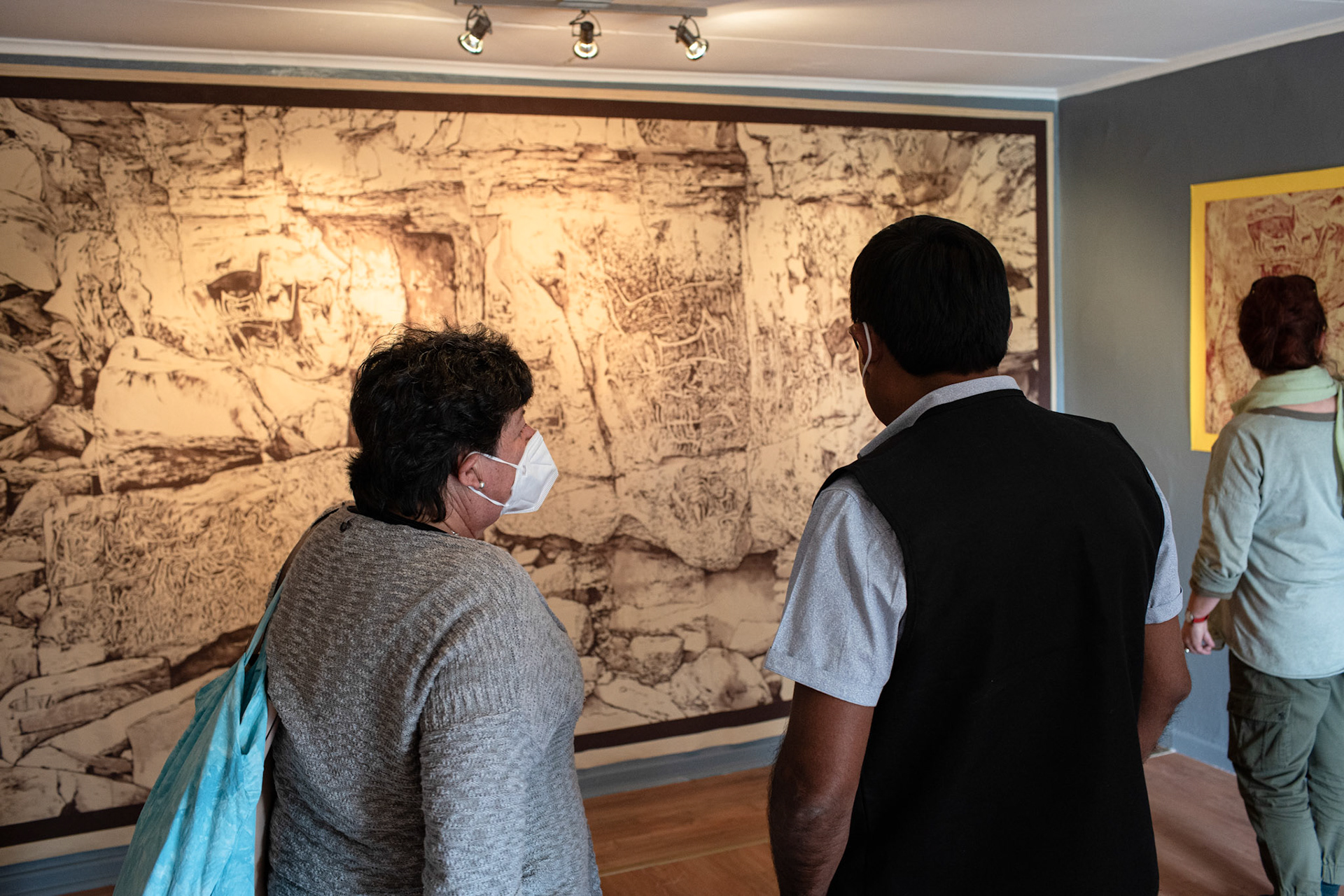
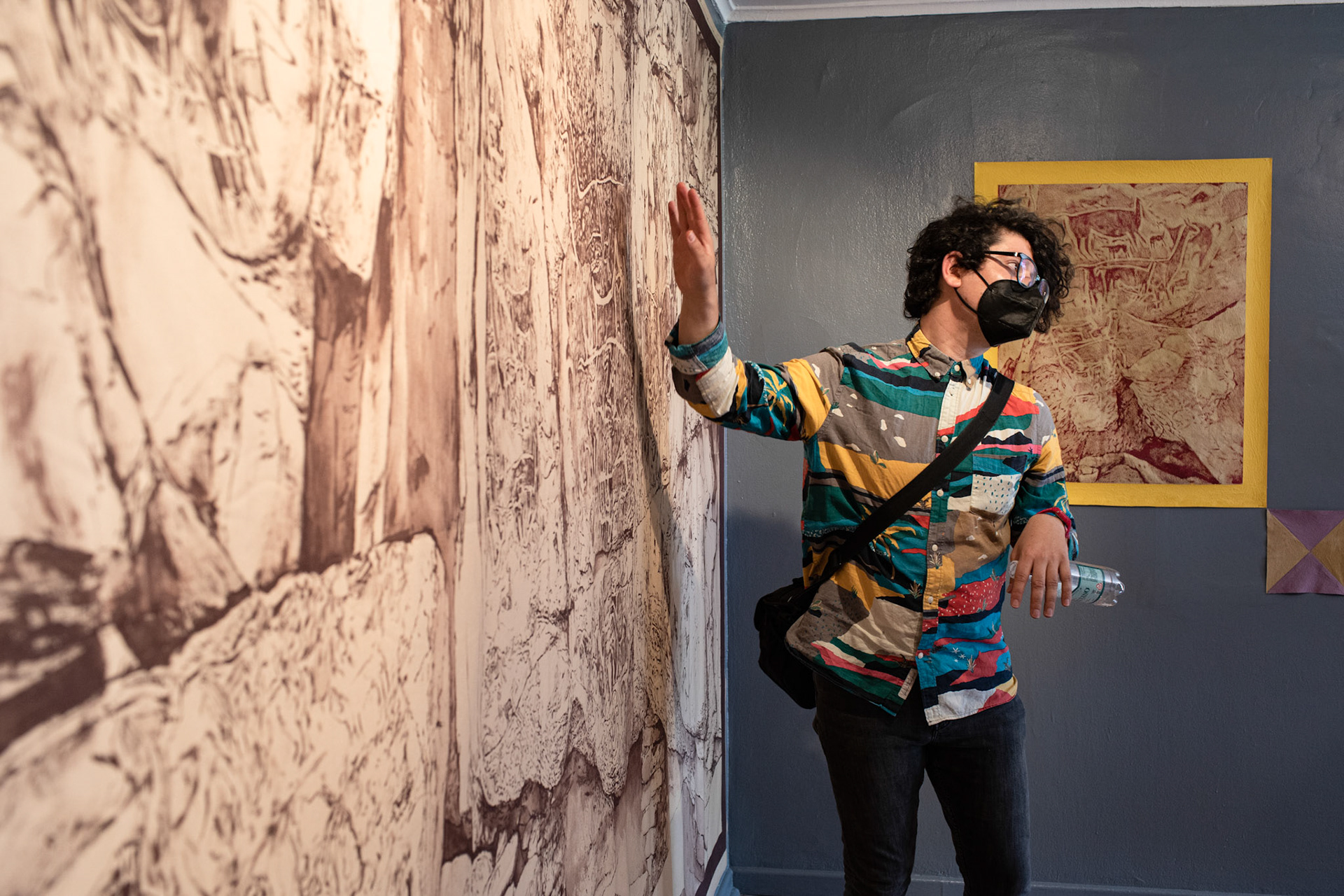
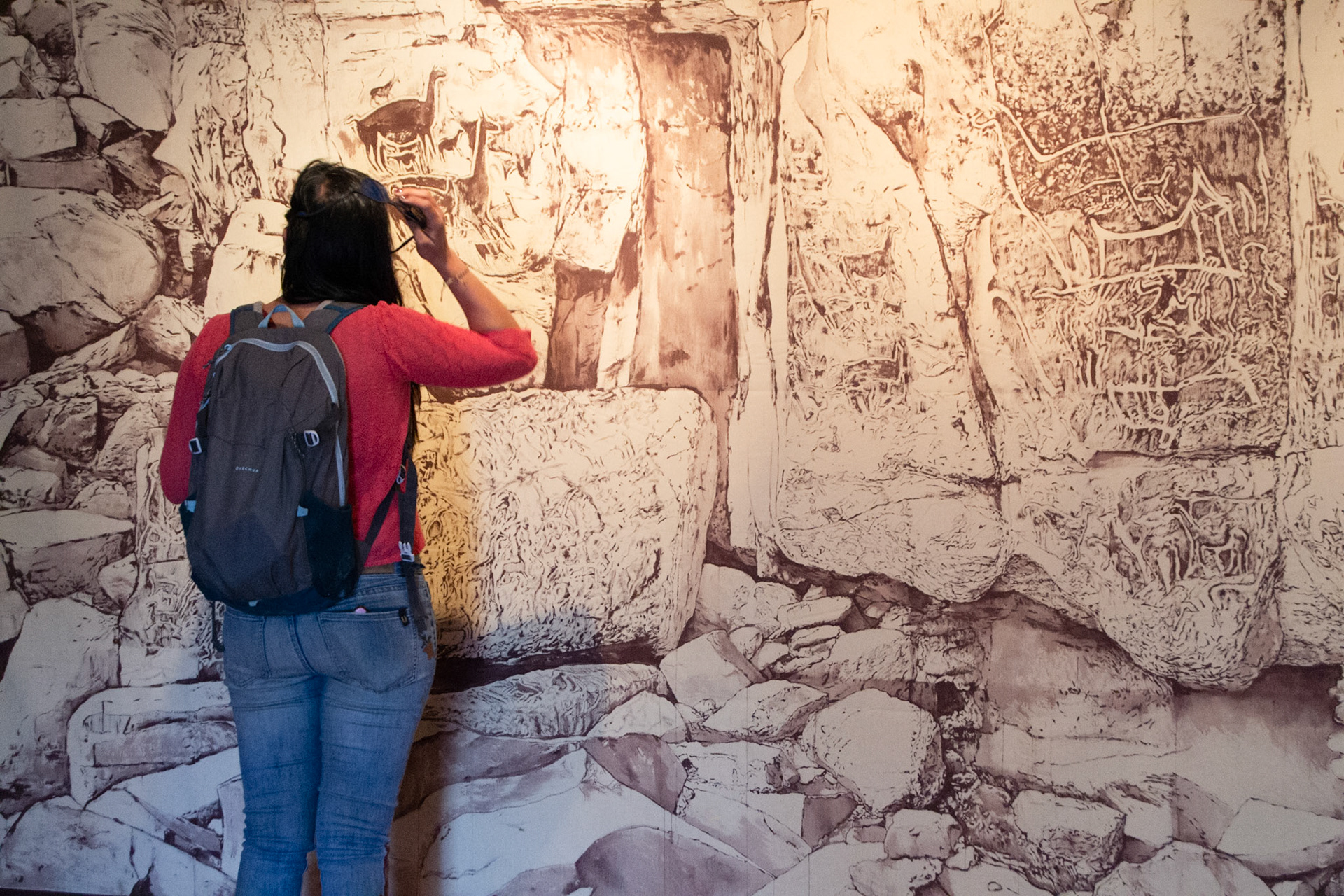
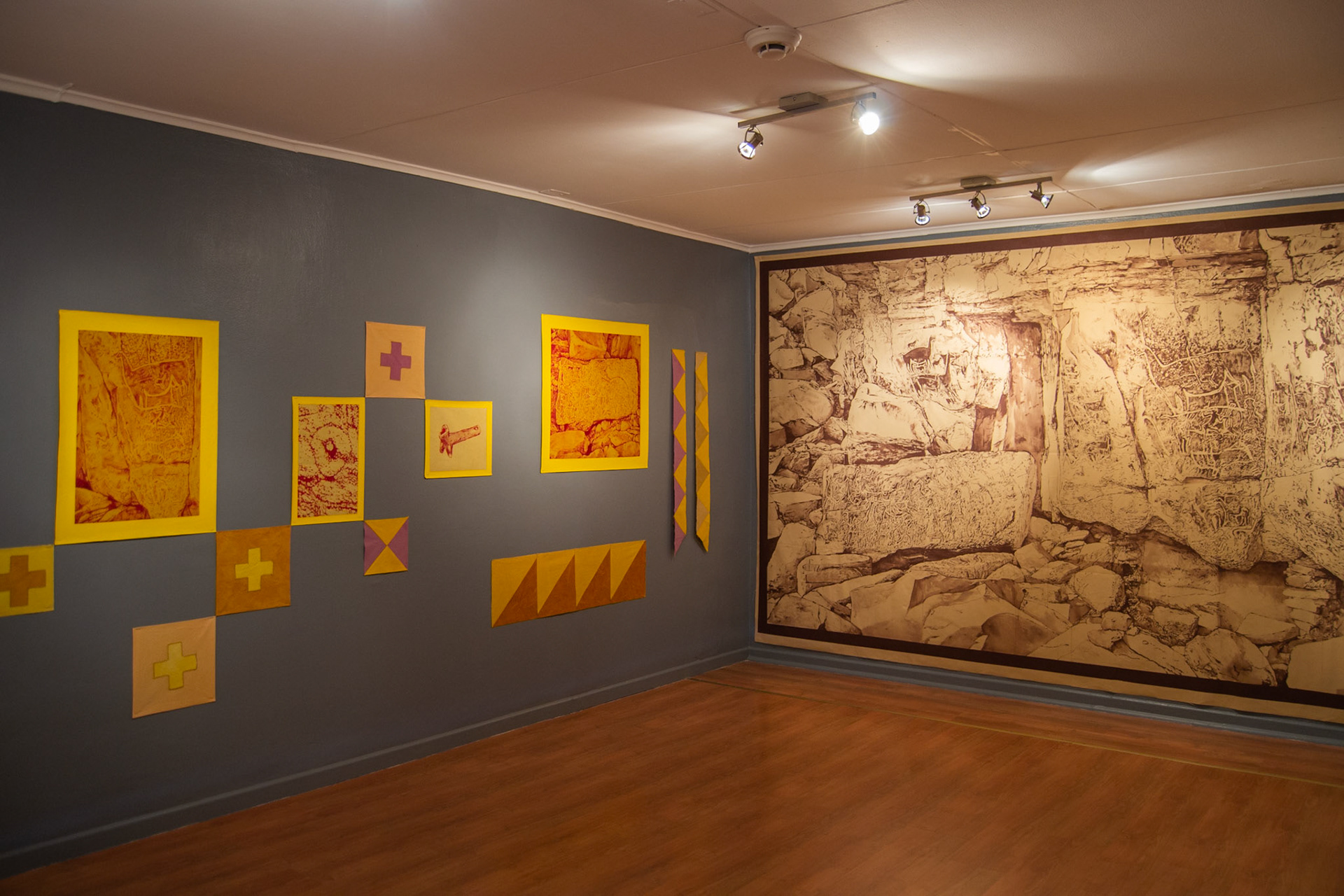
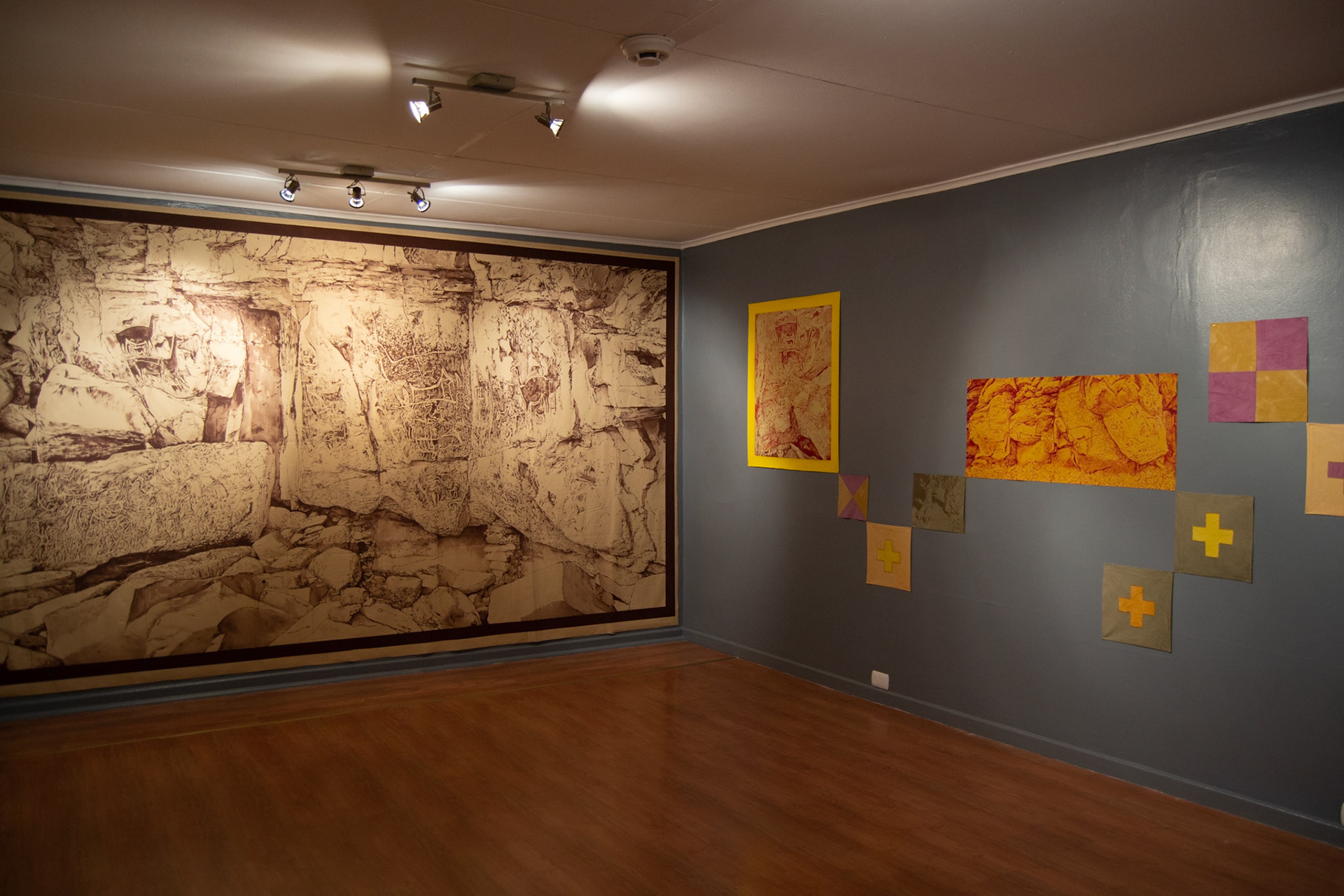
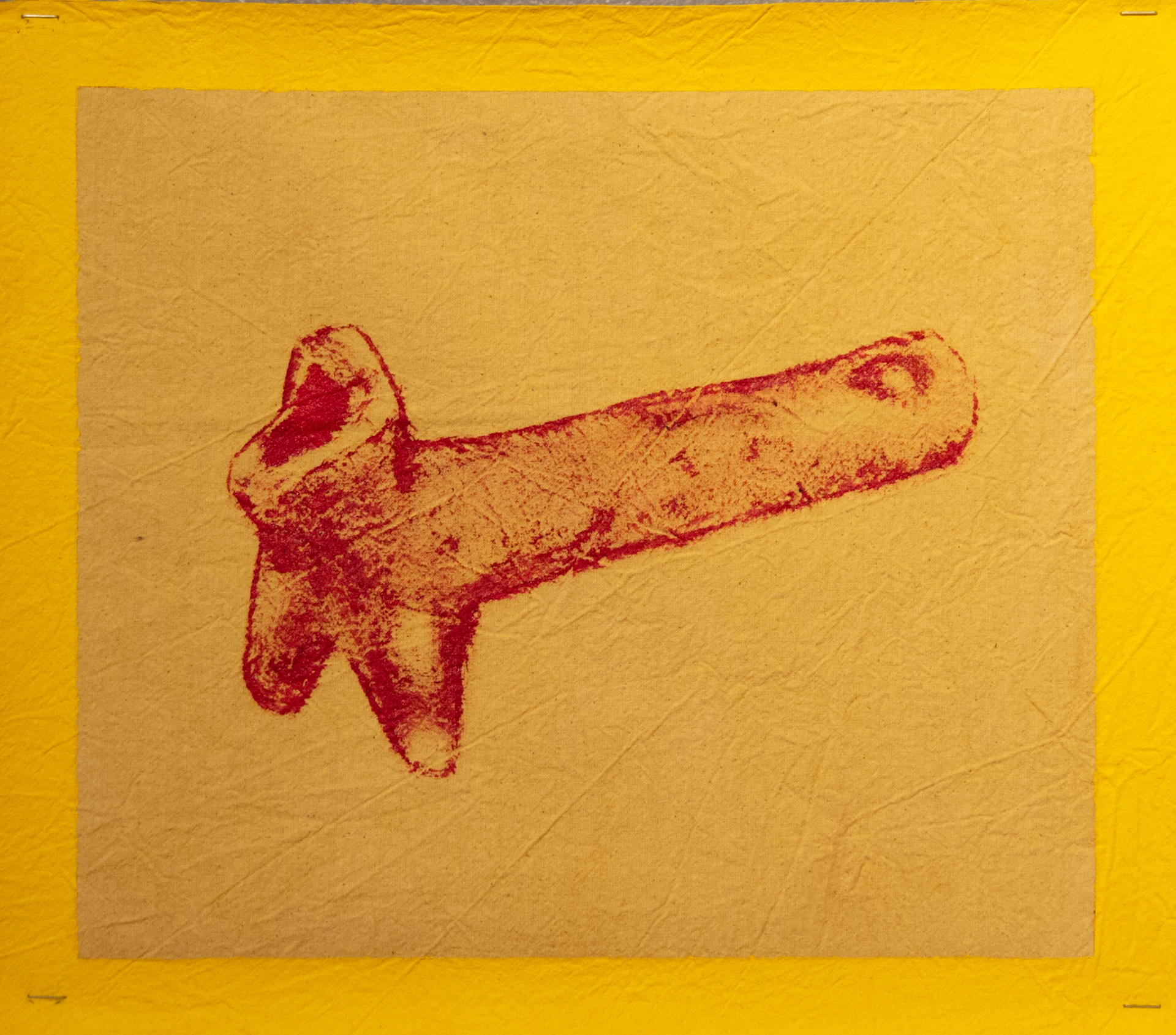
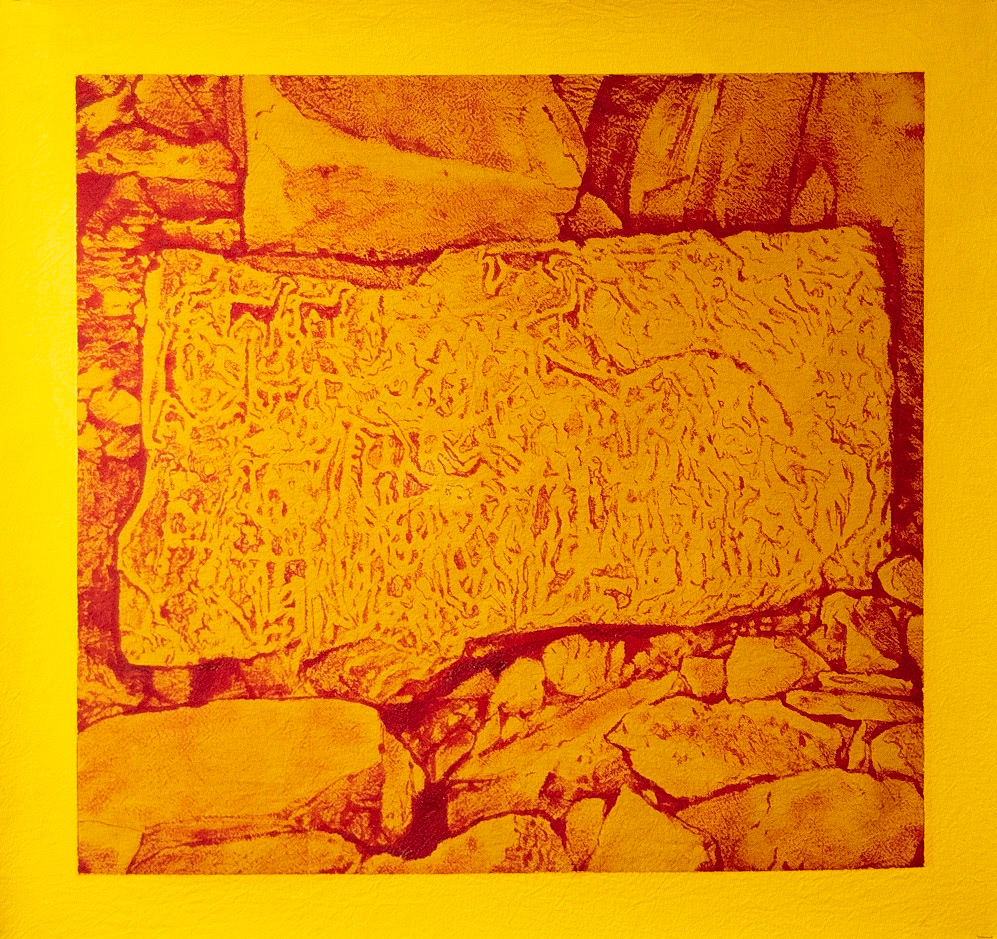
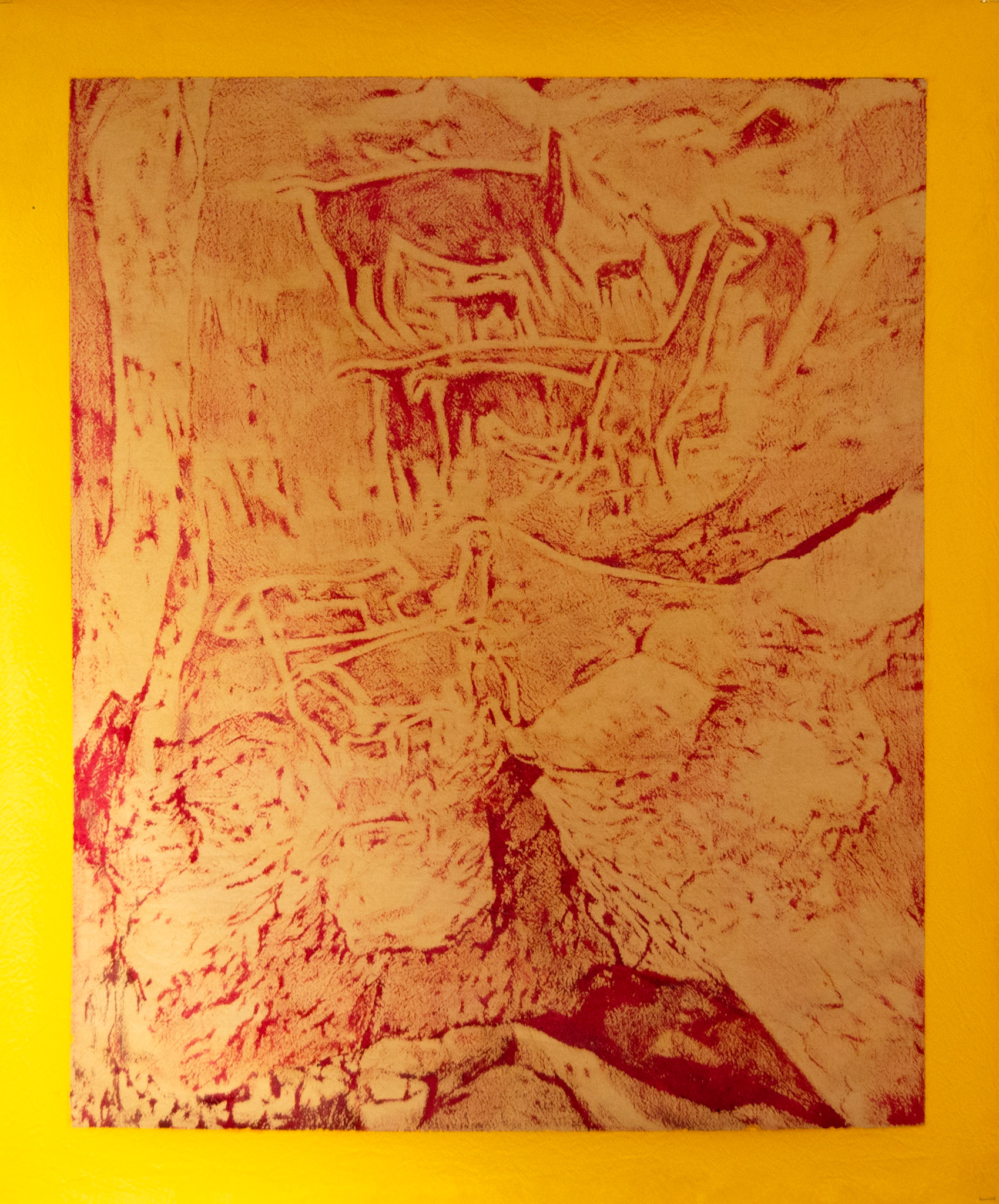
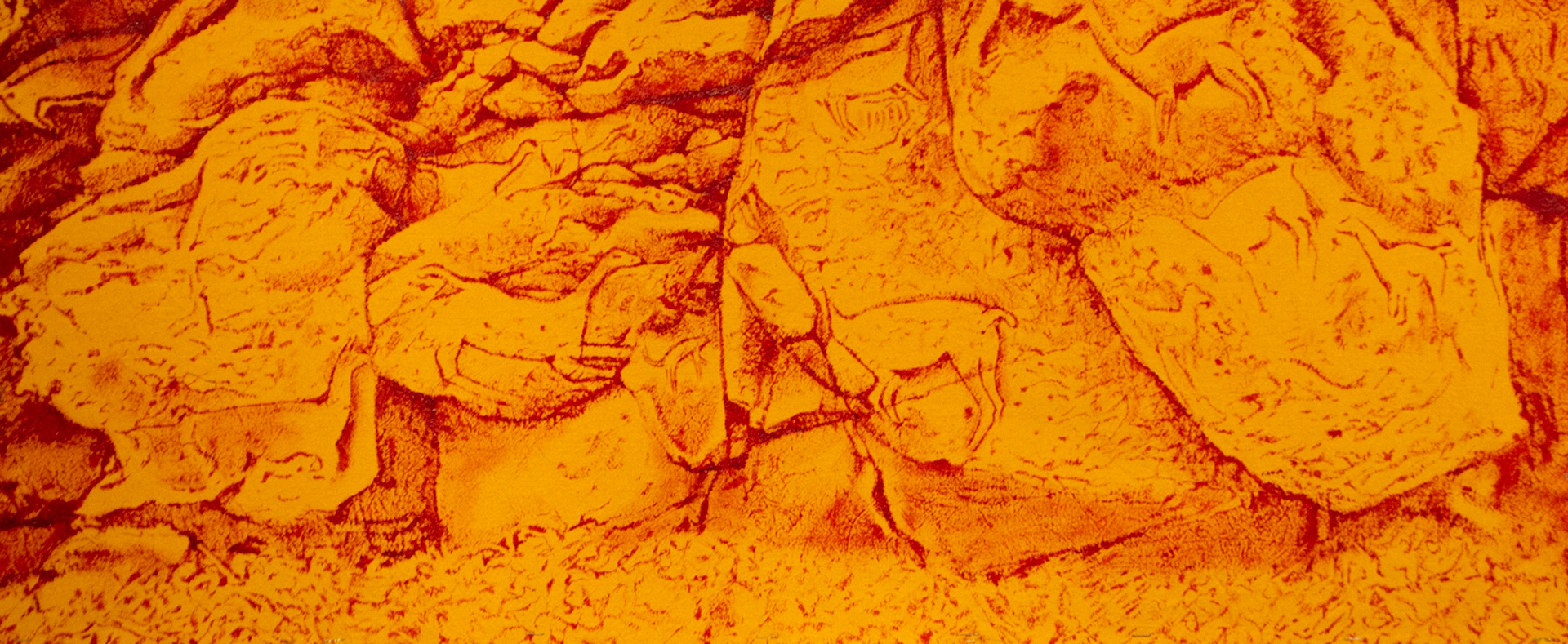

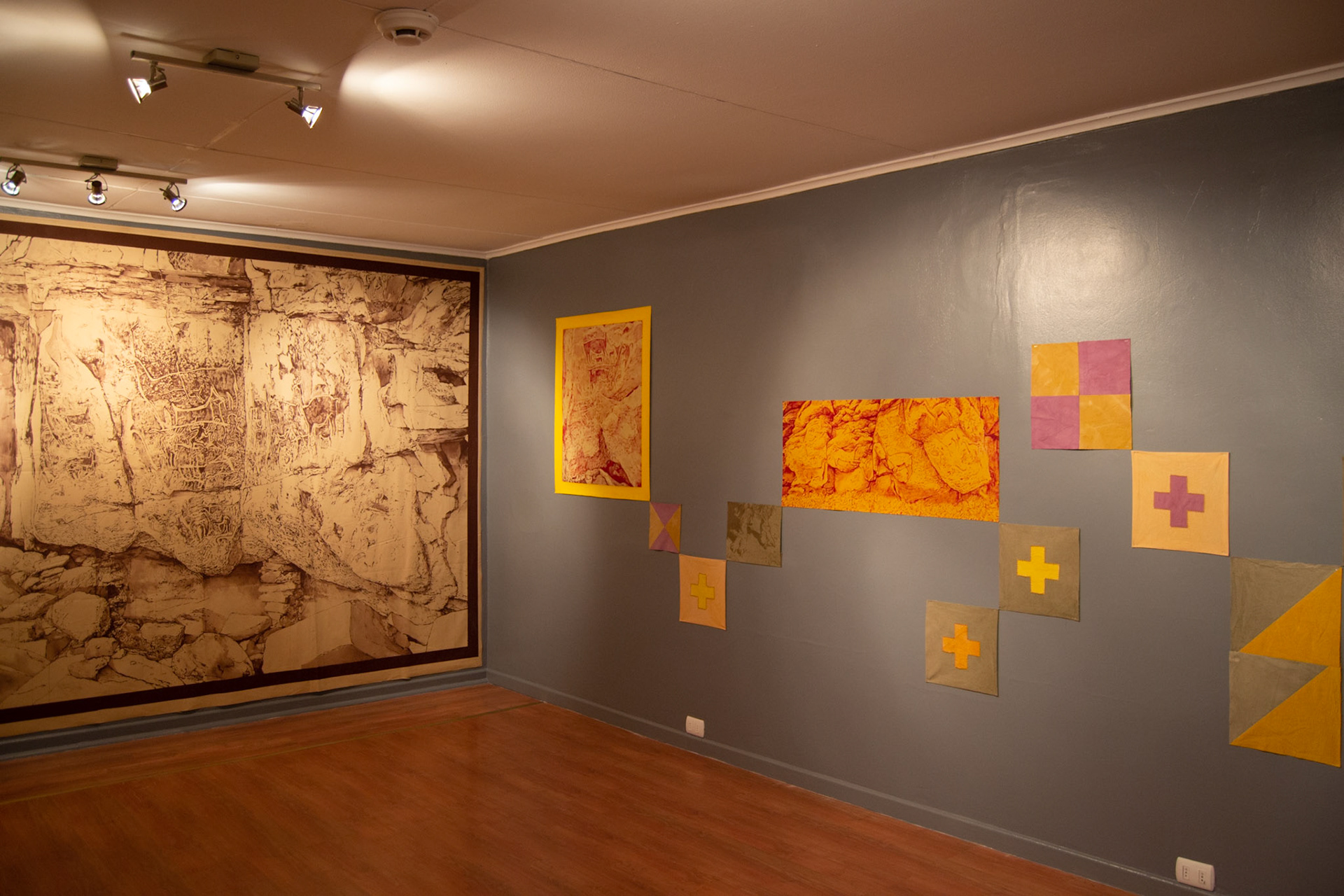
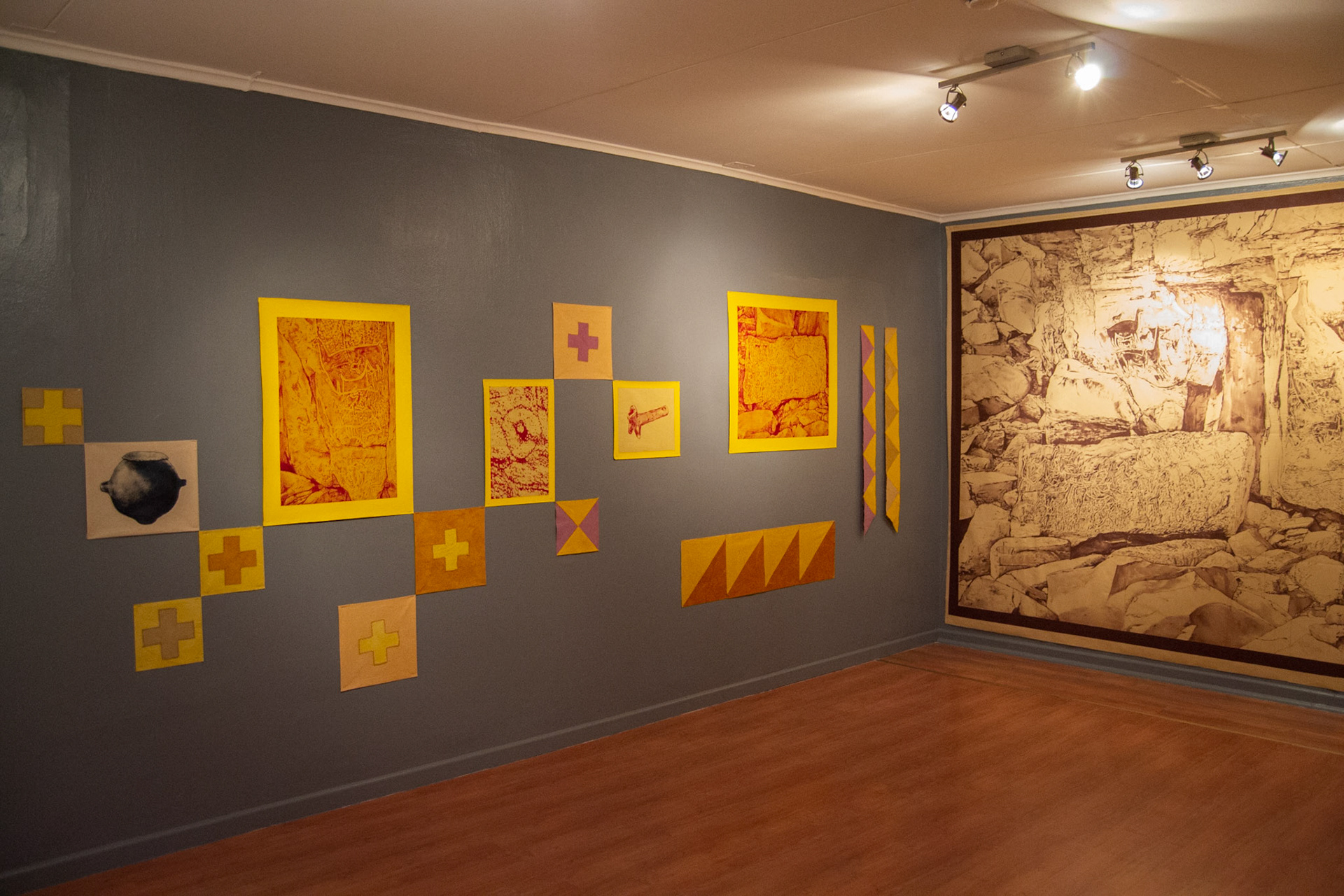

Proceso de trabajo
